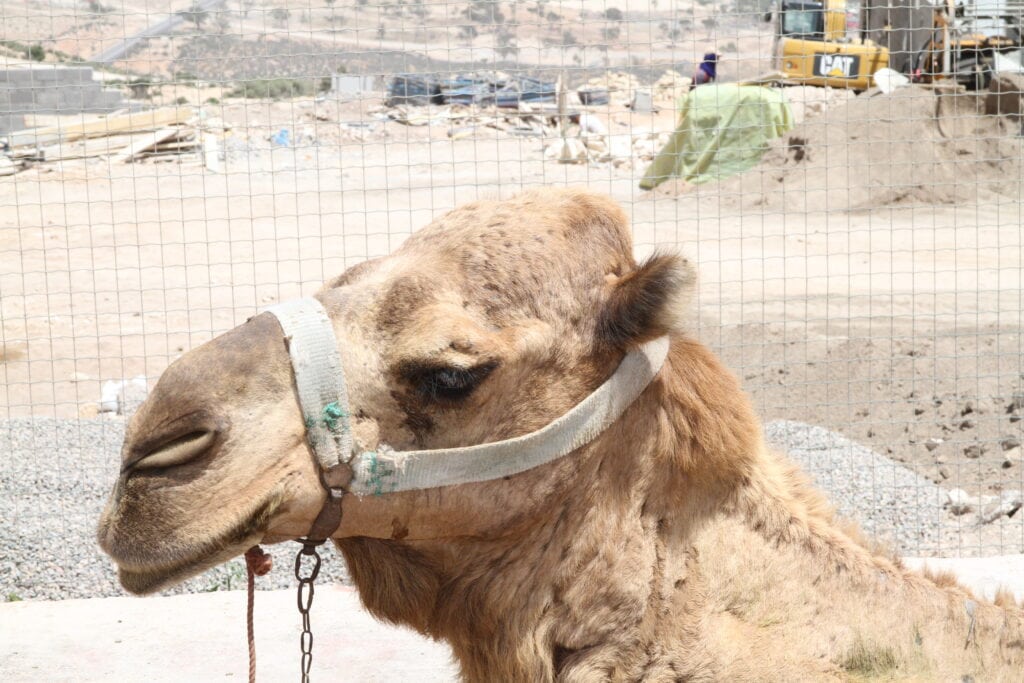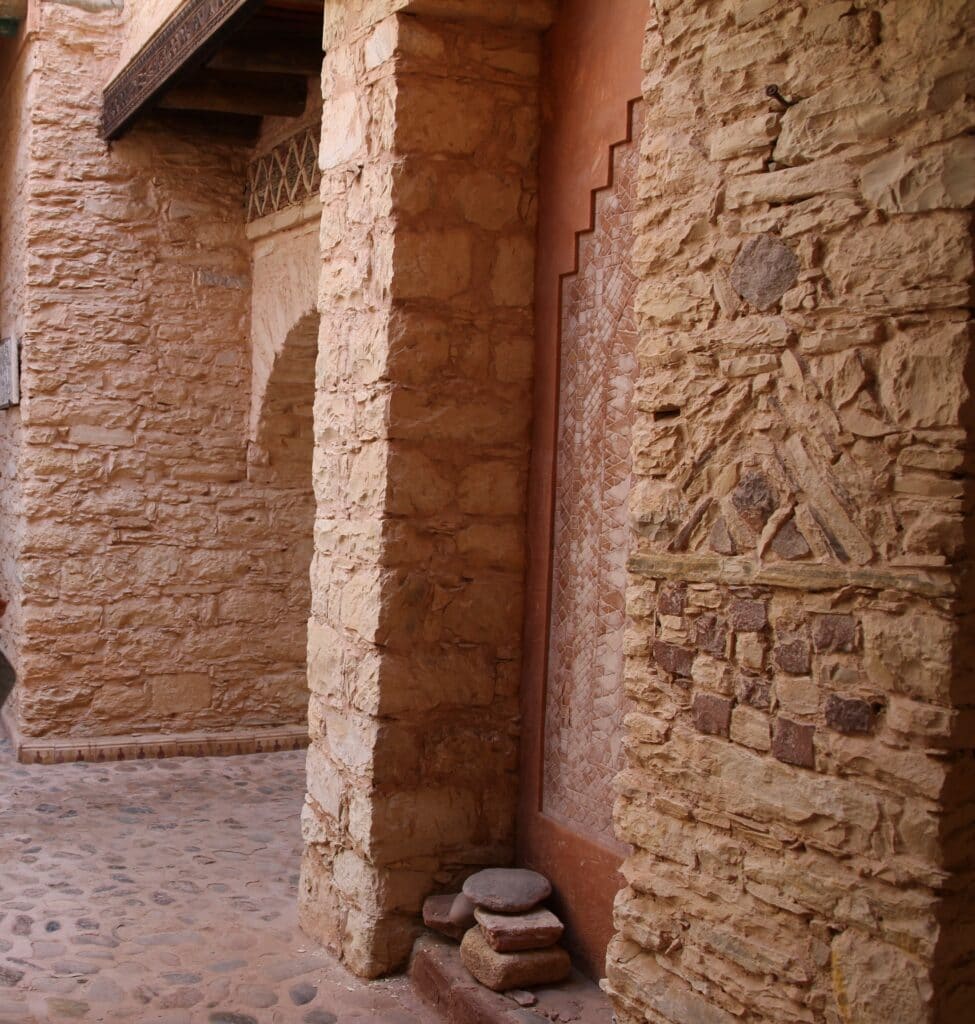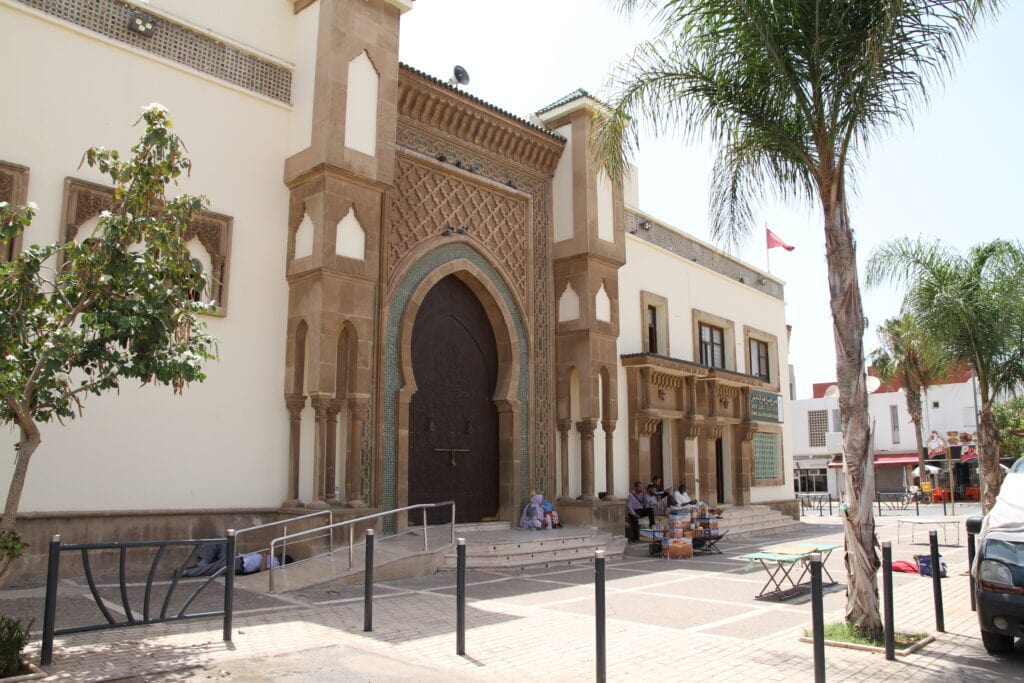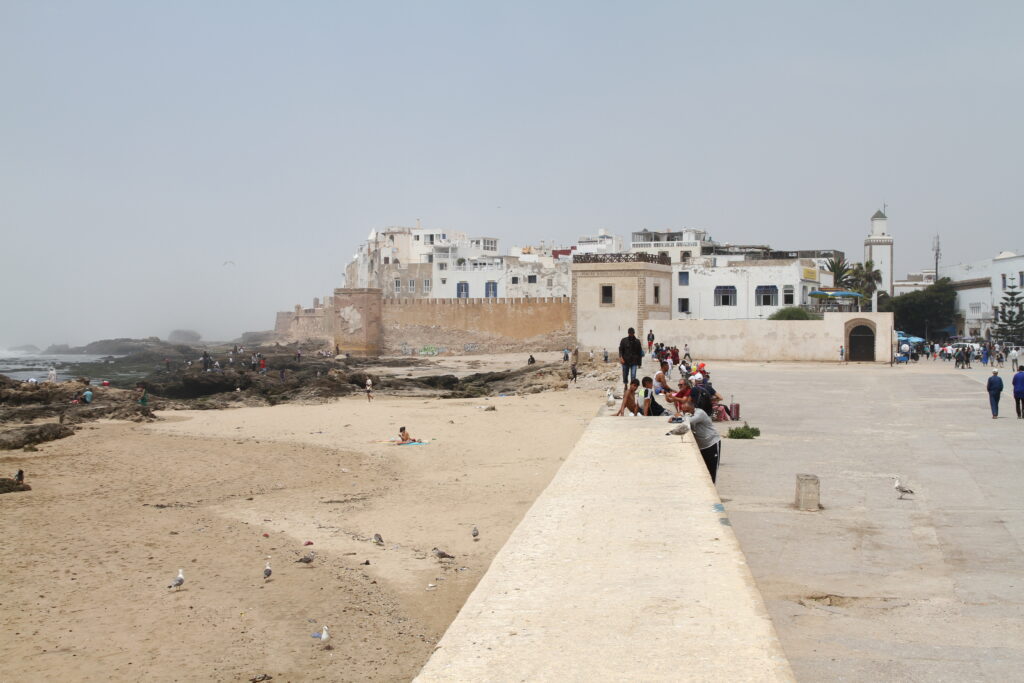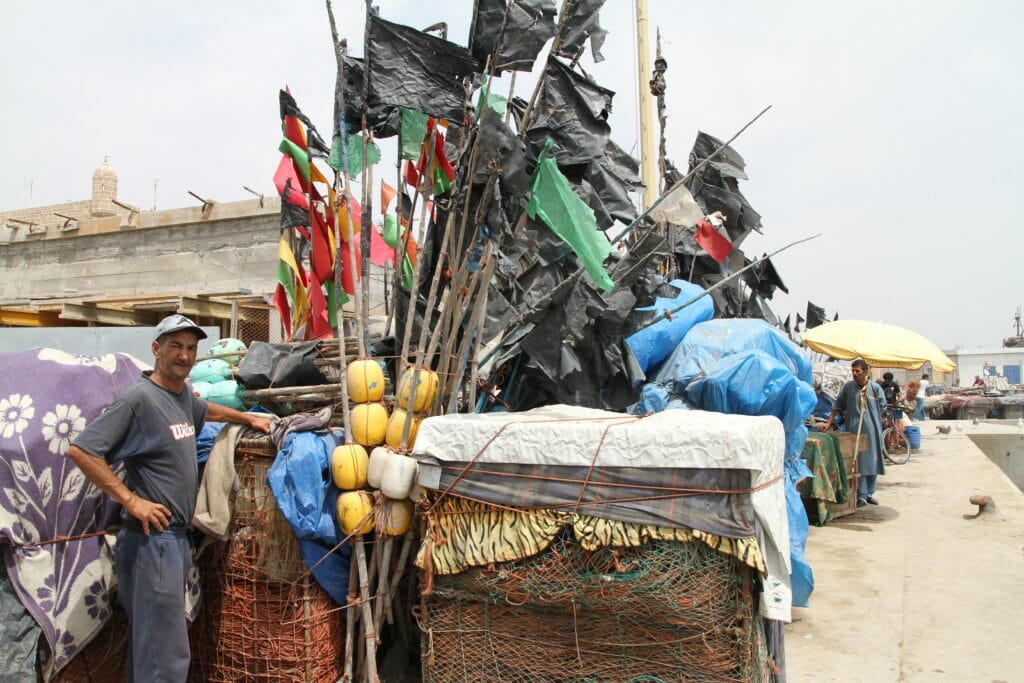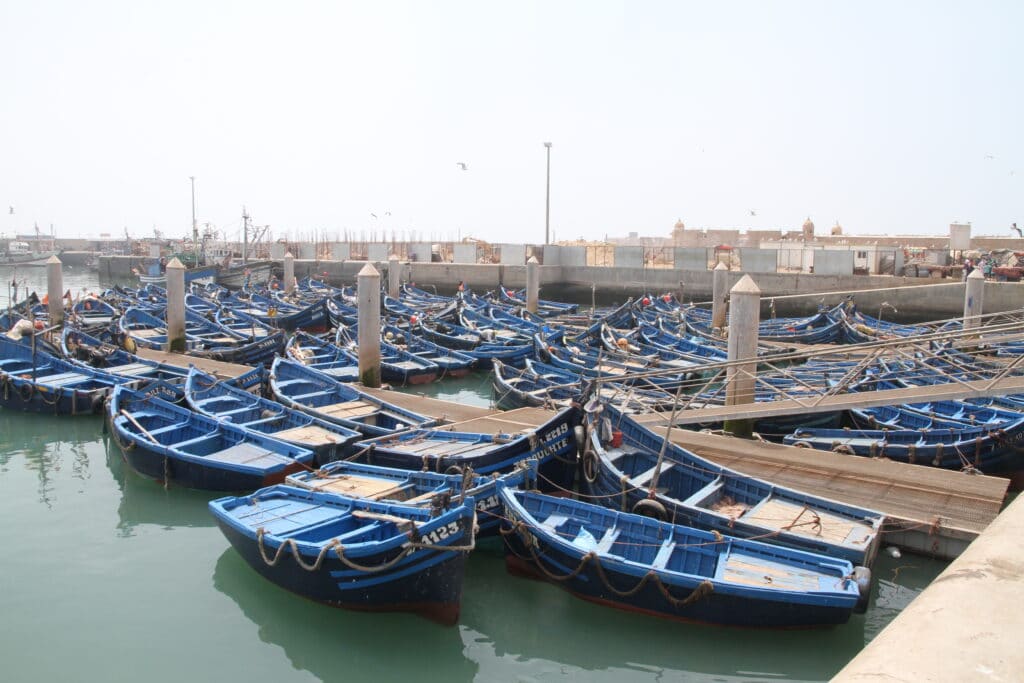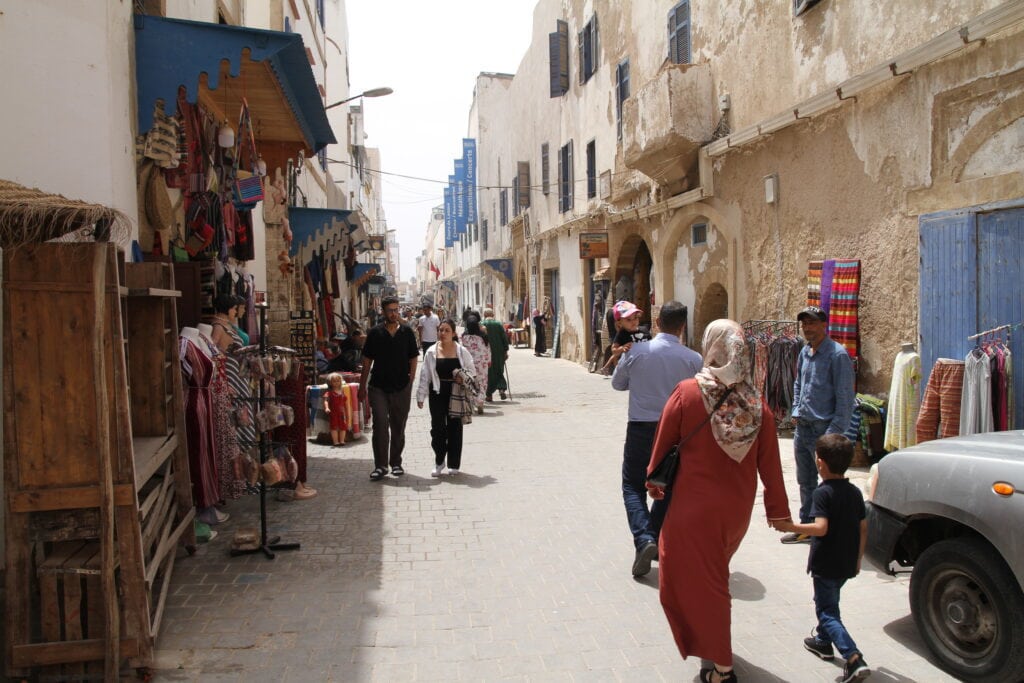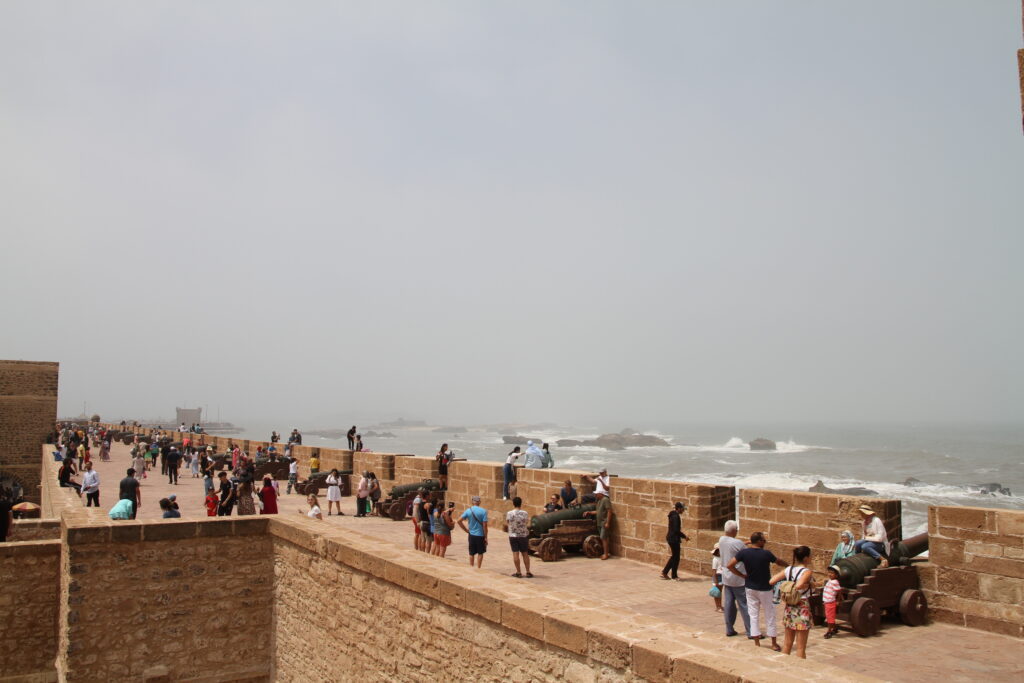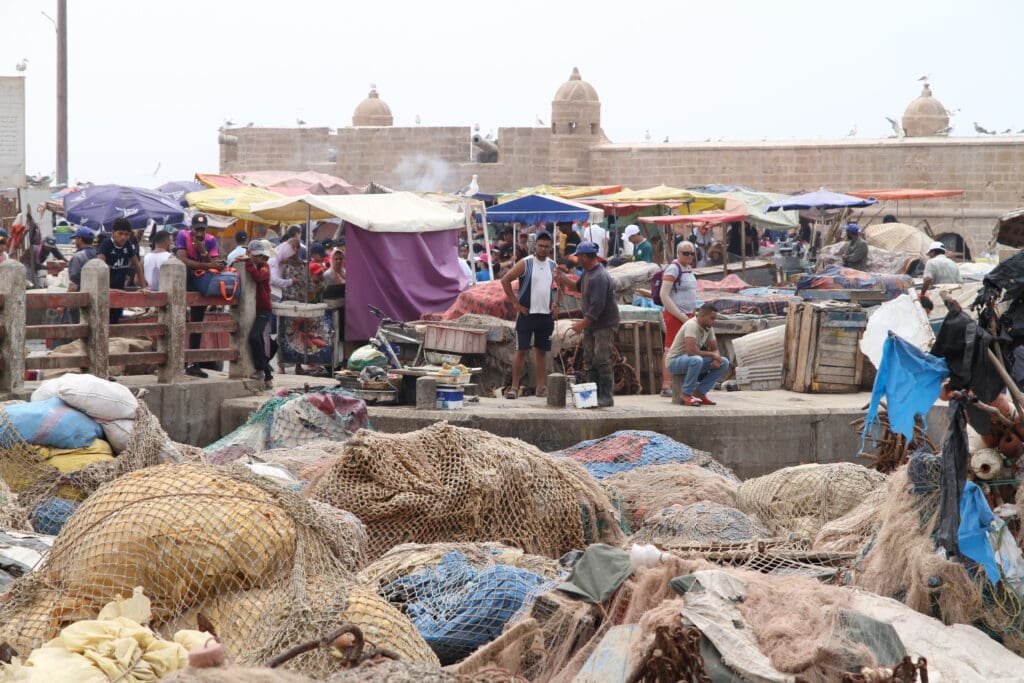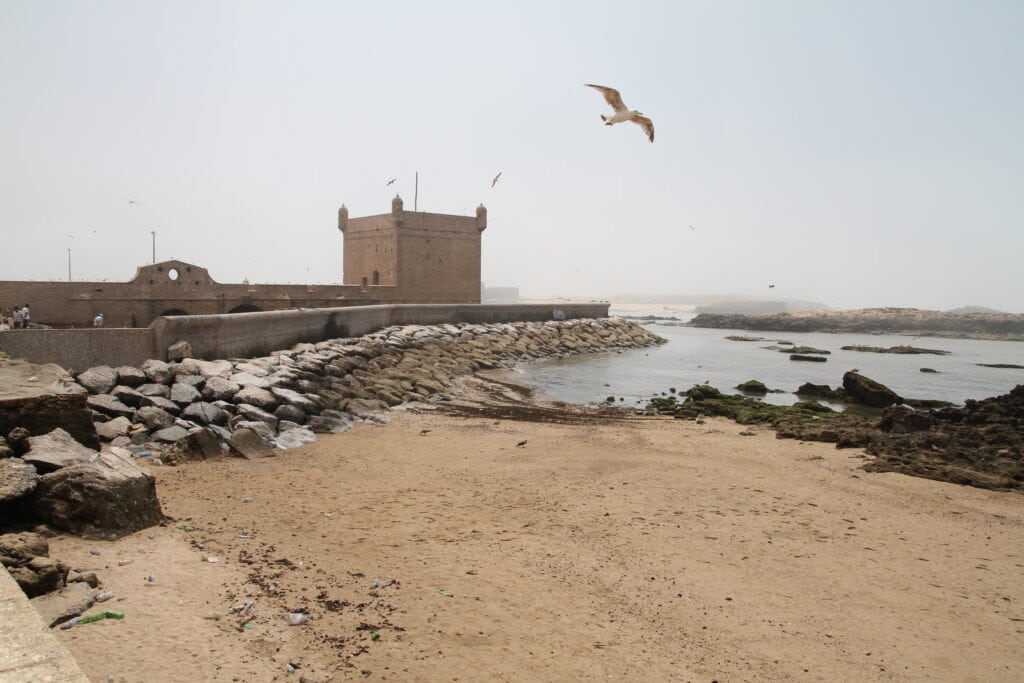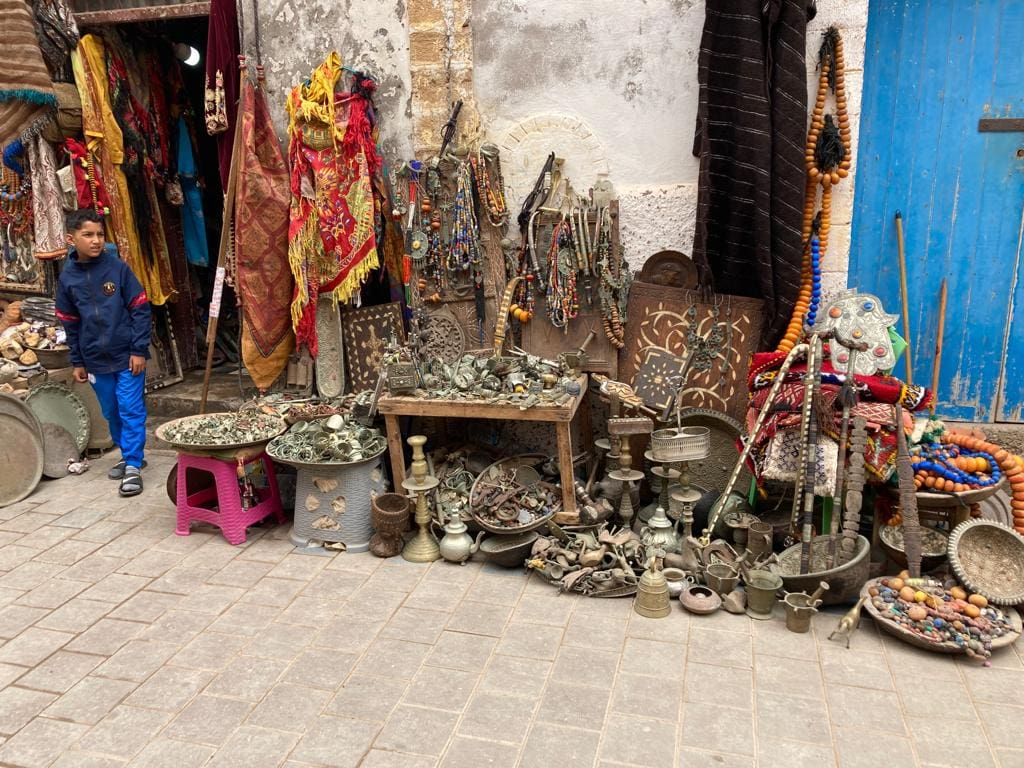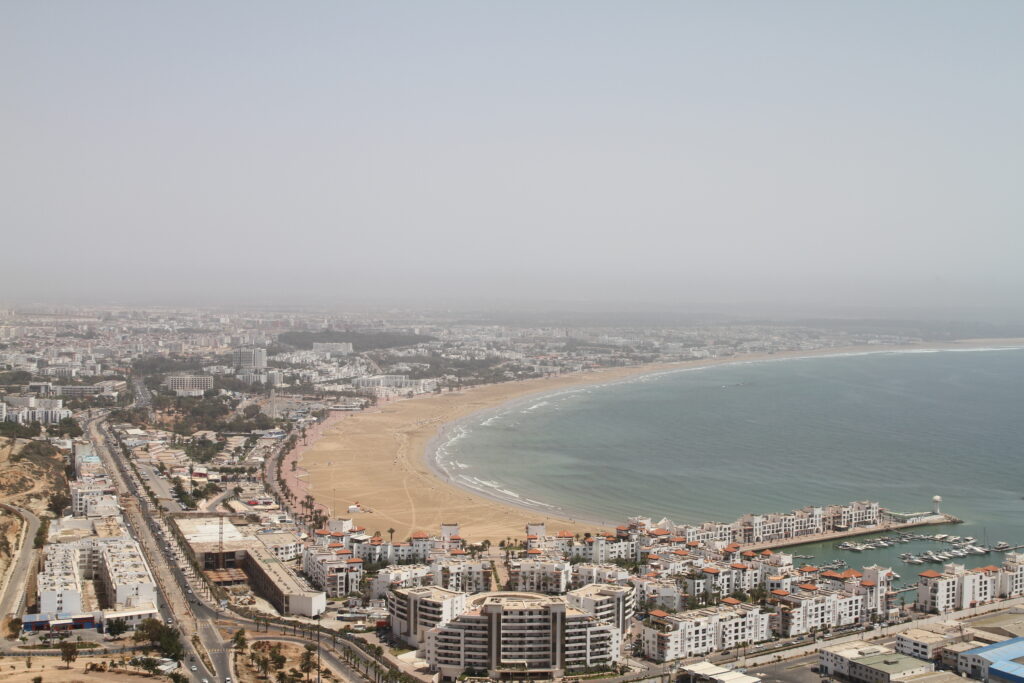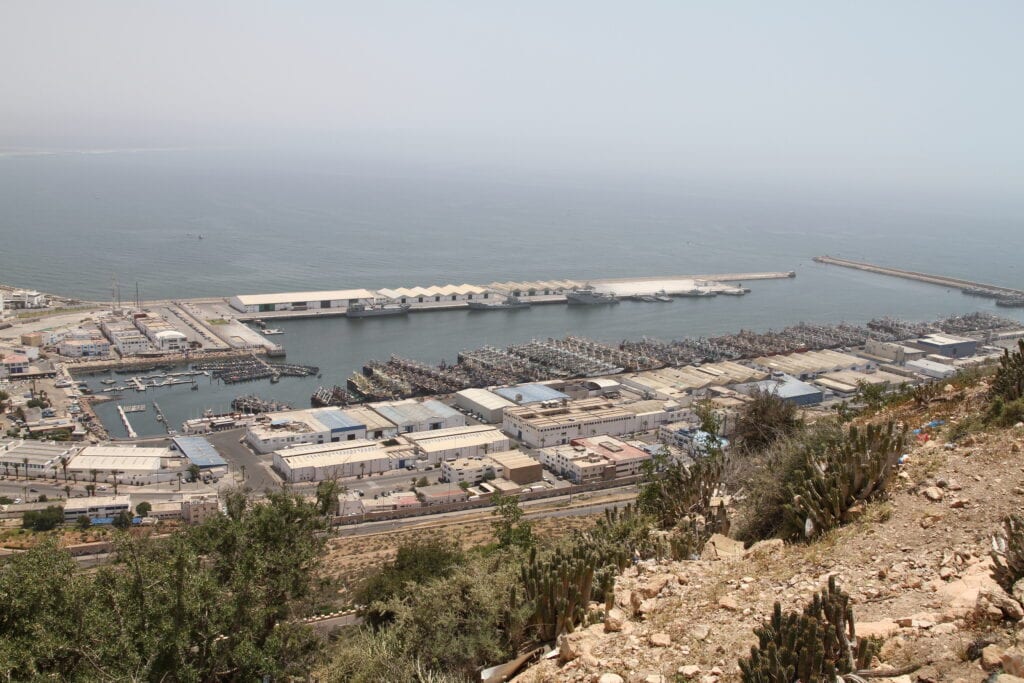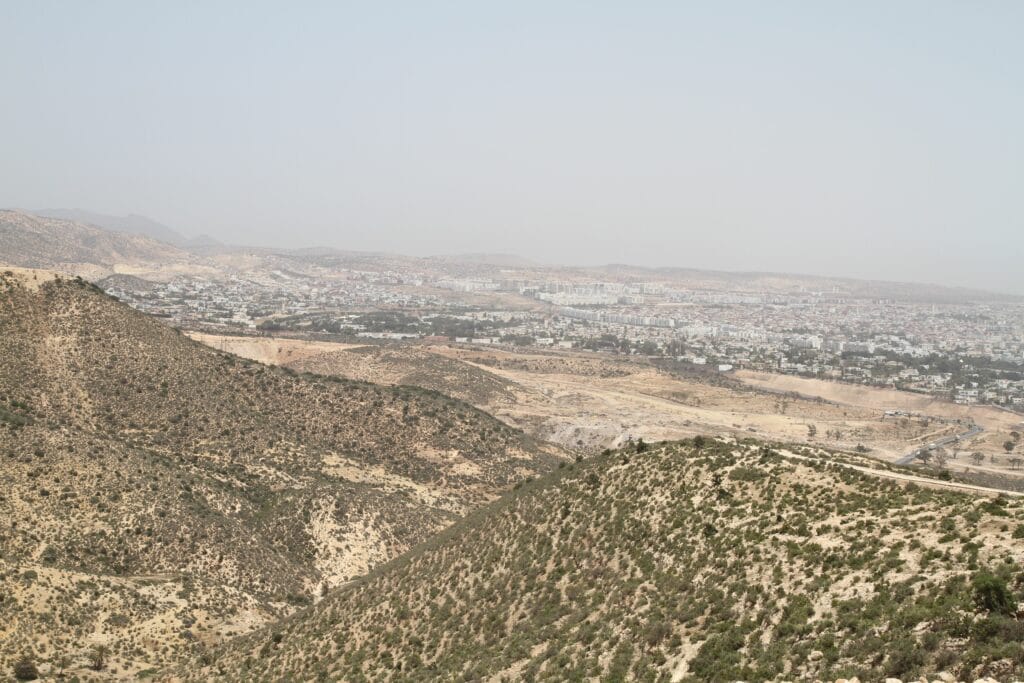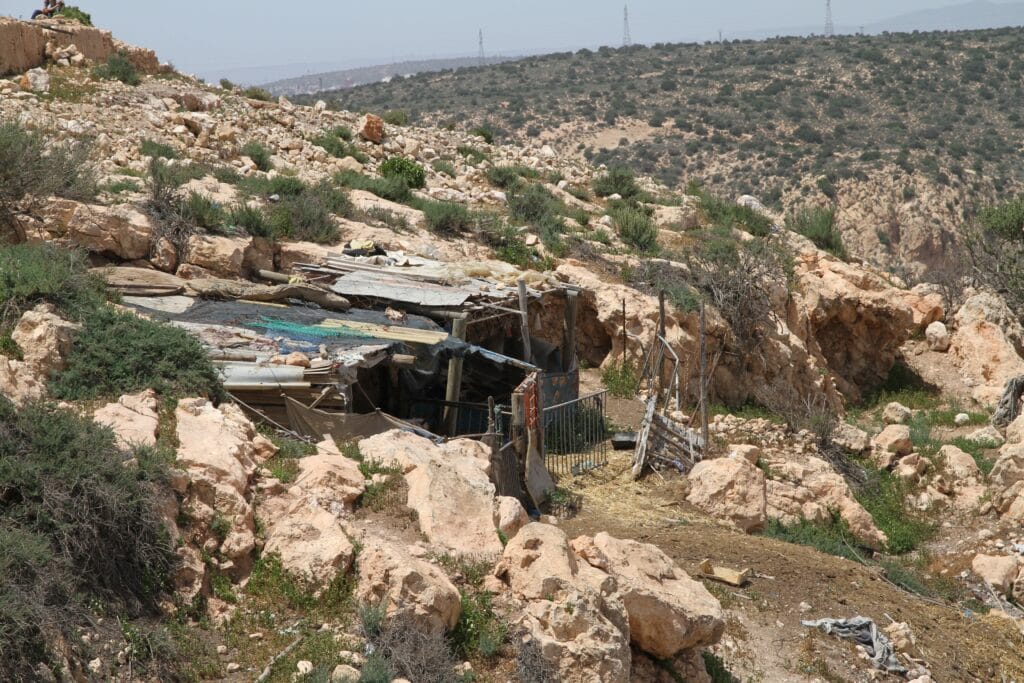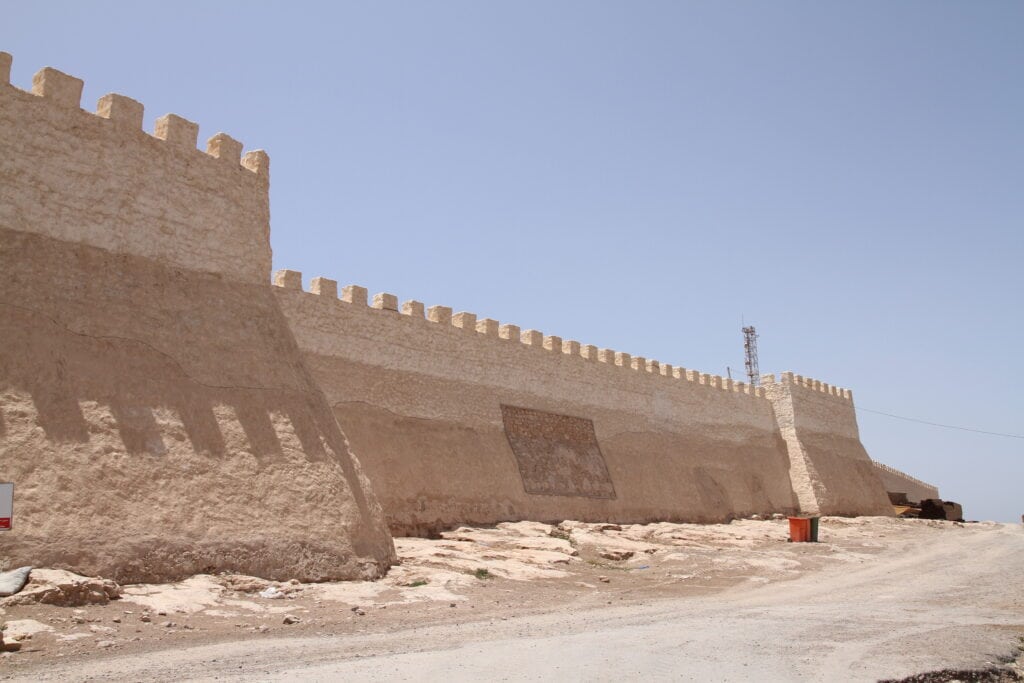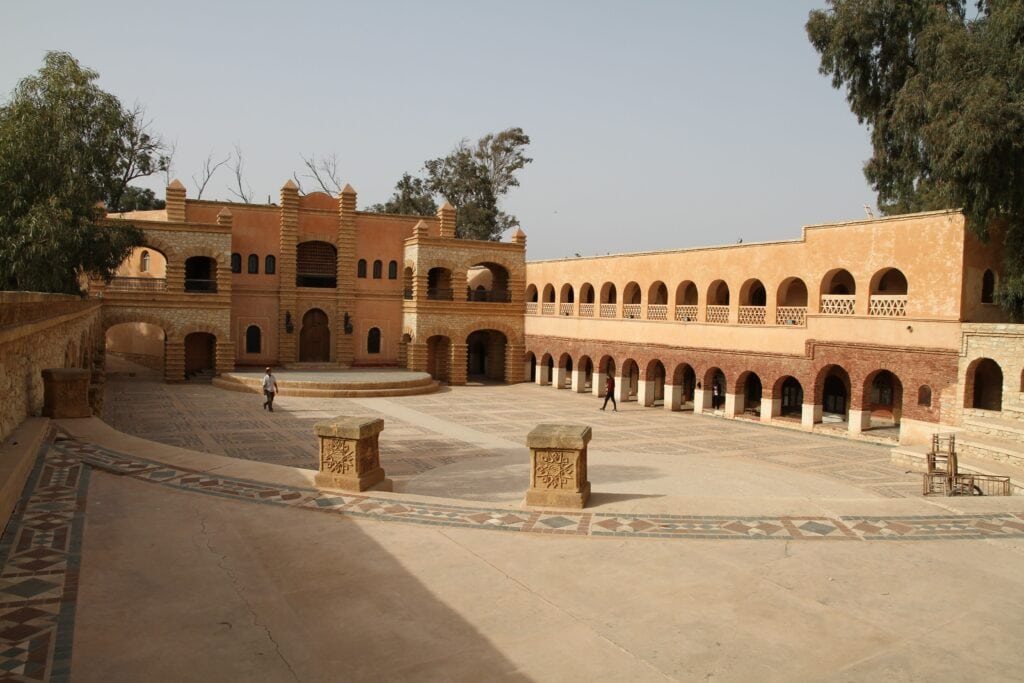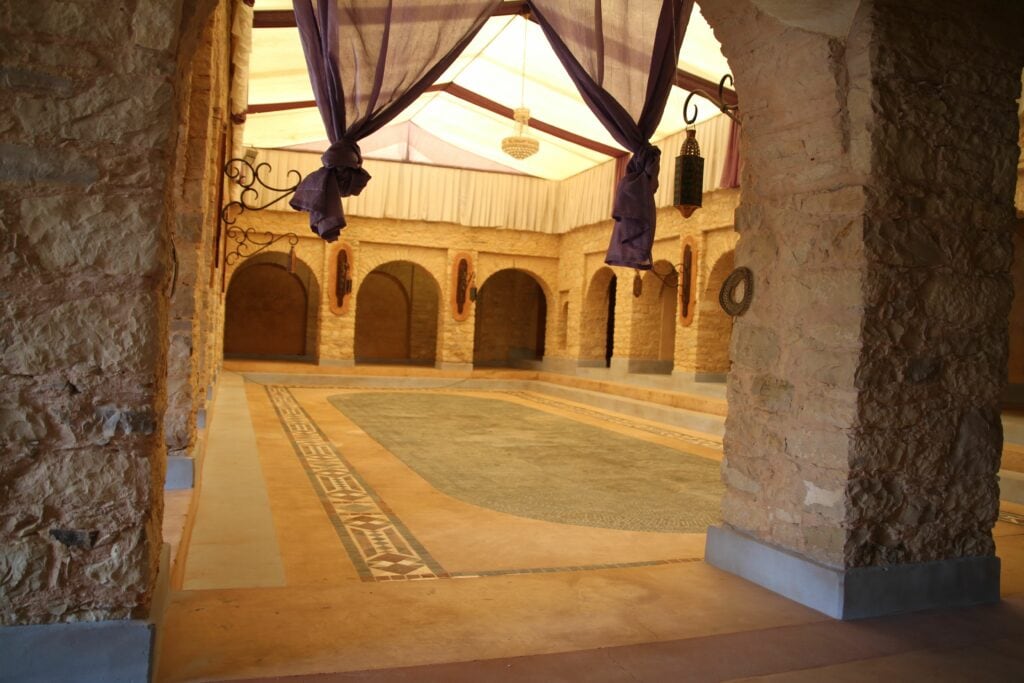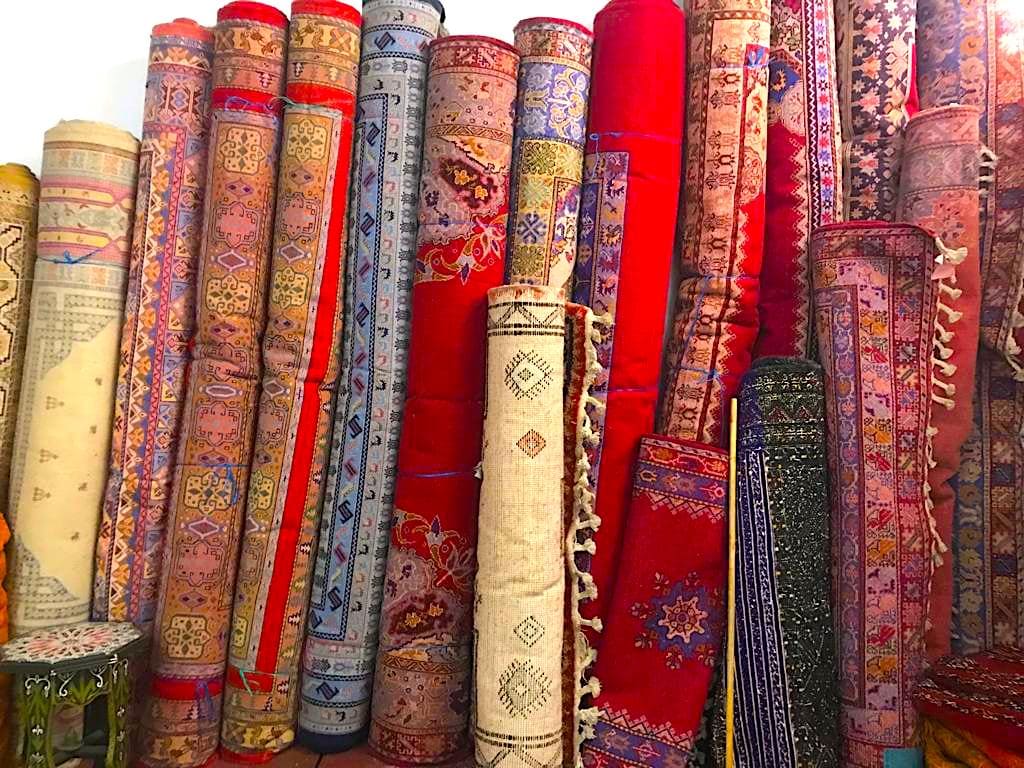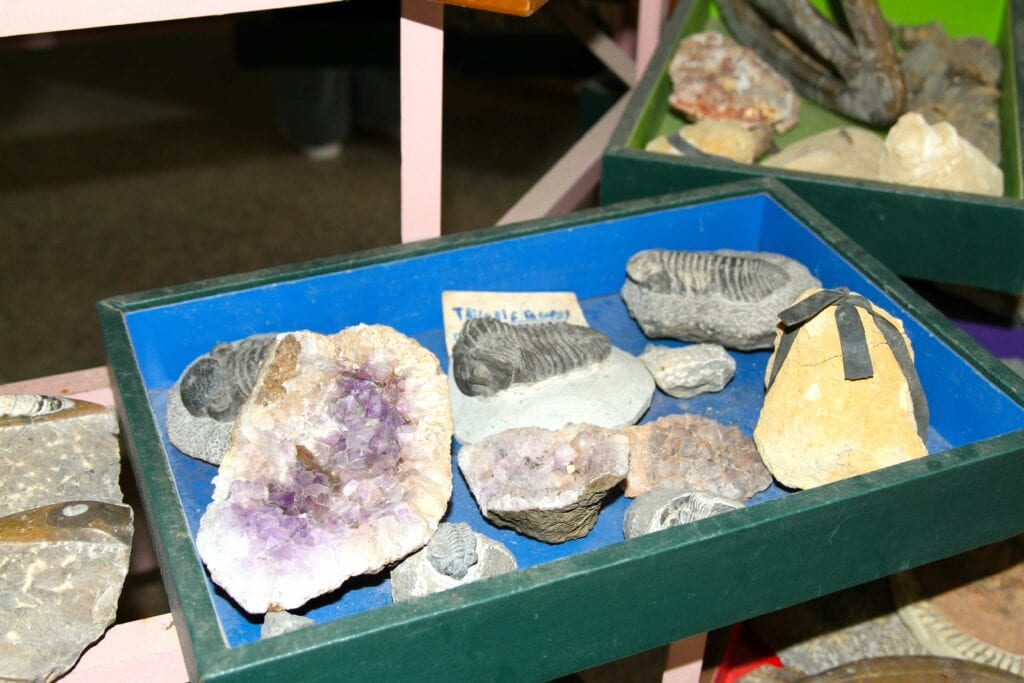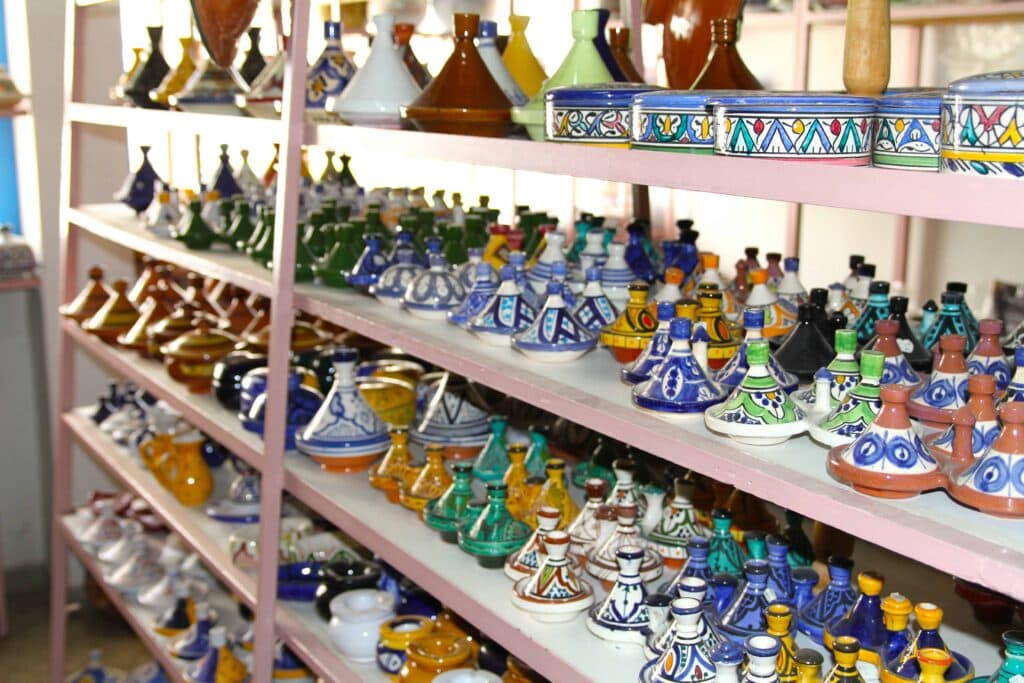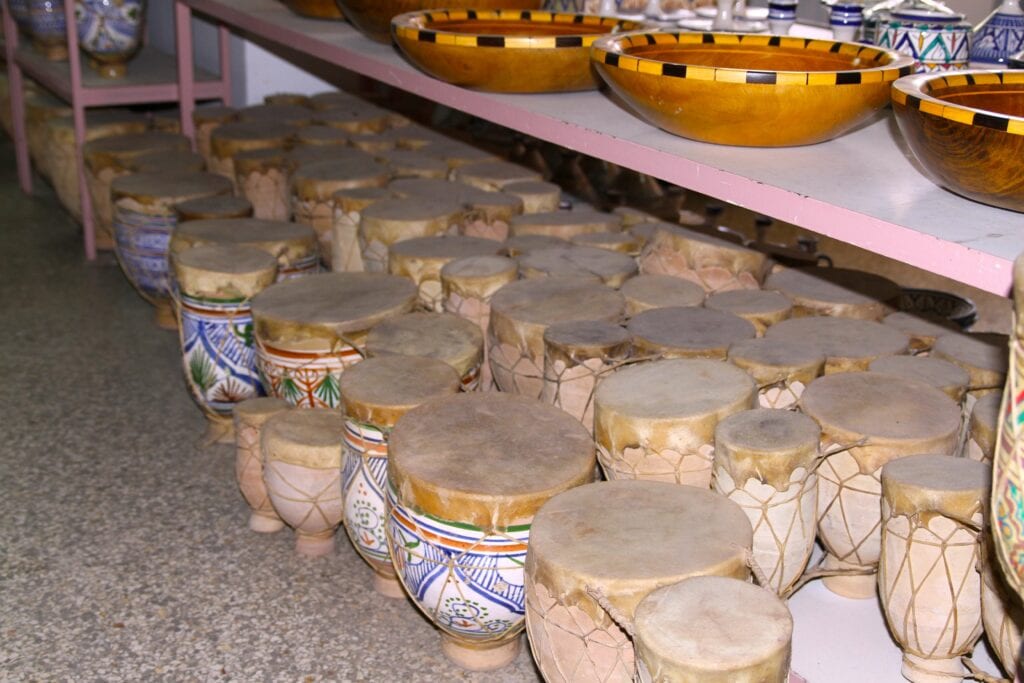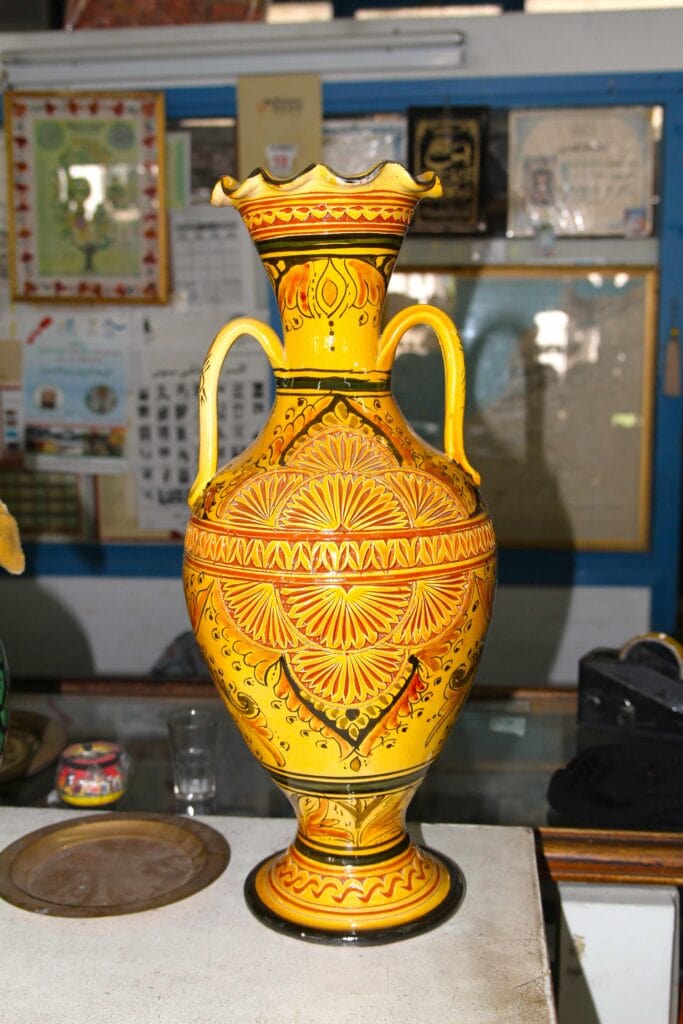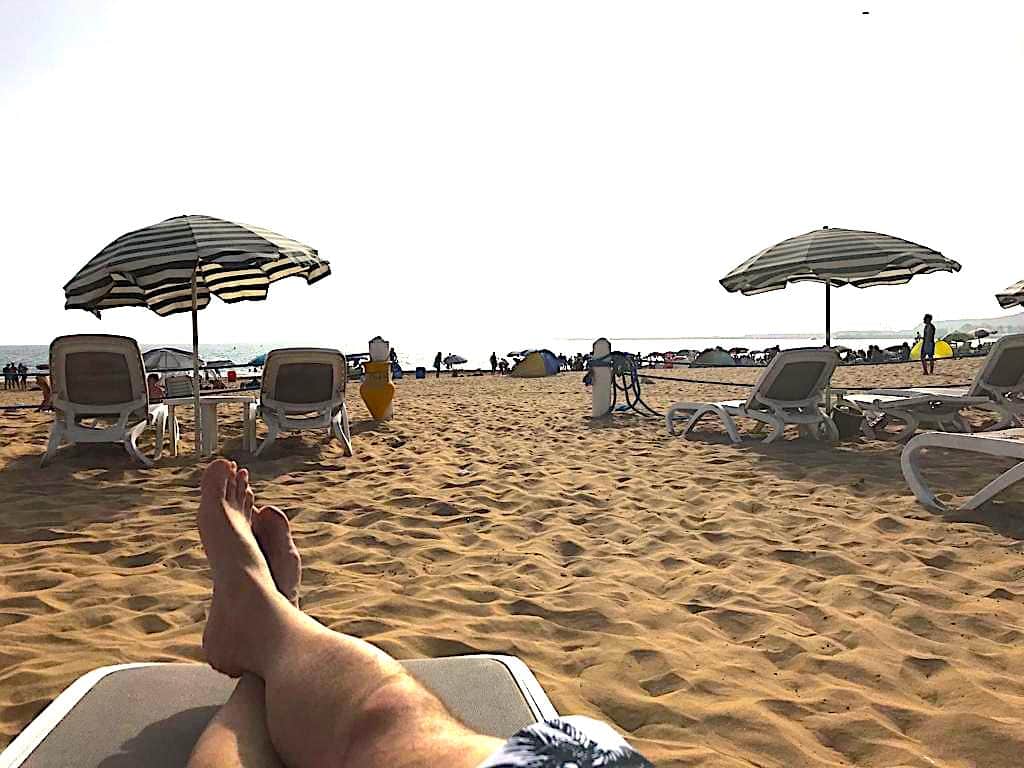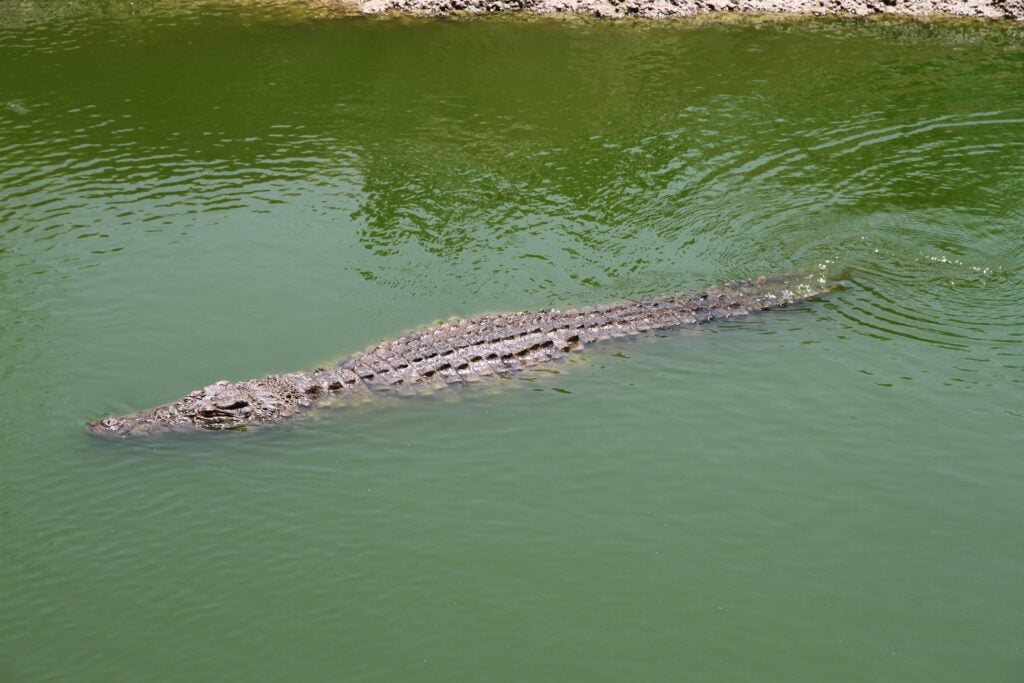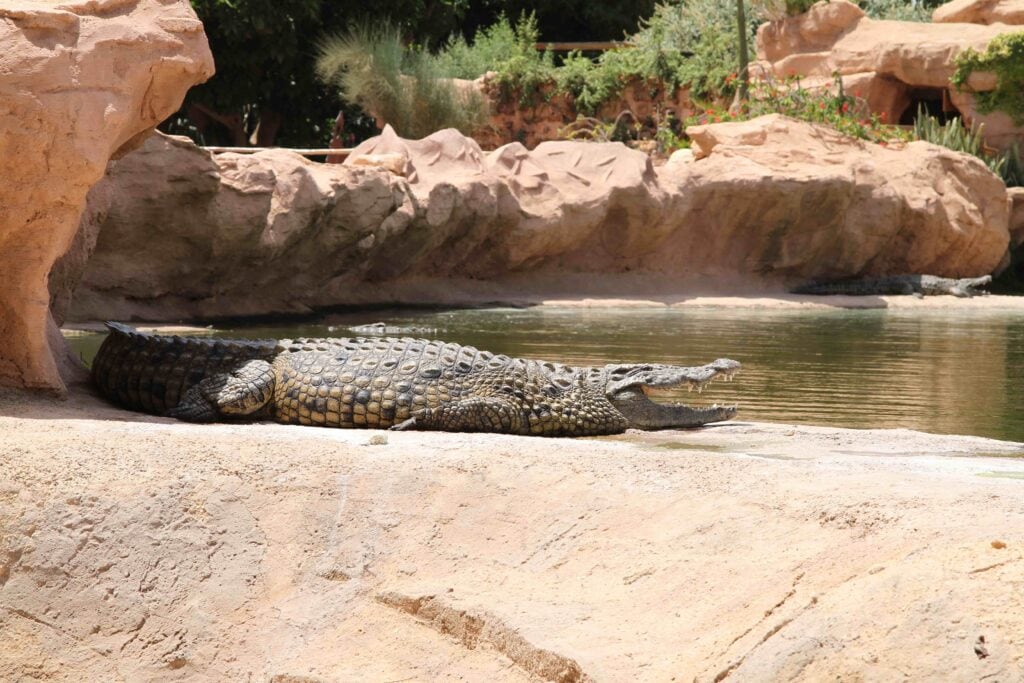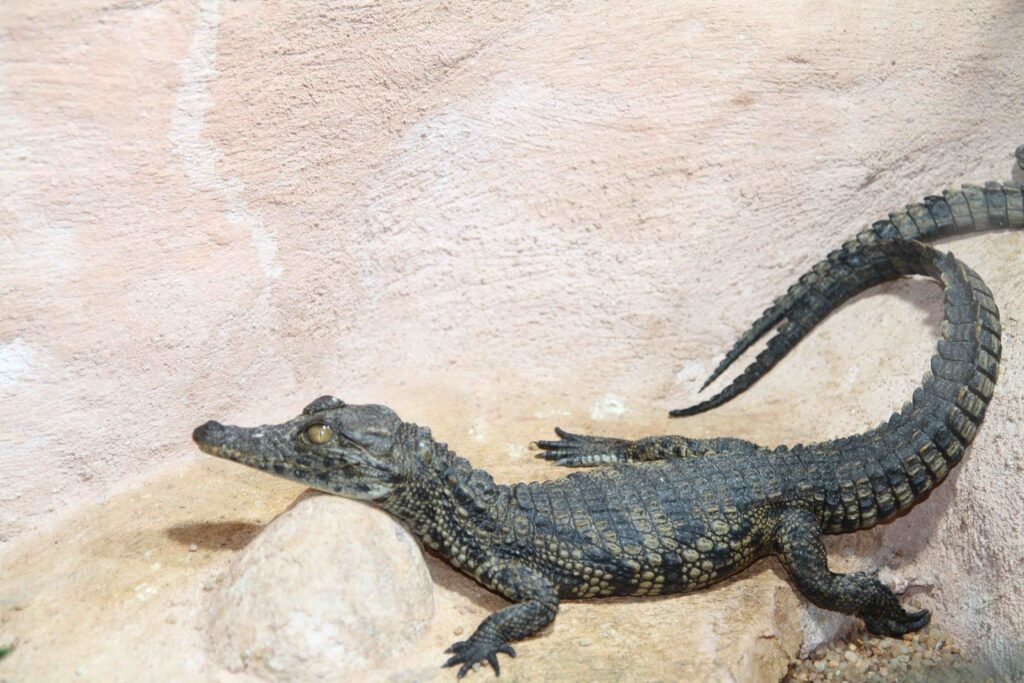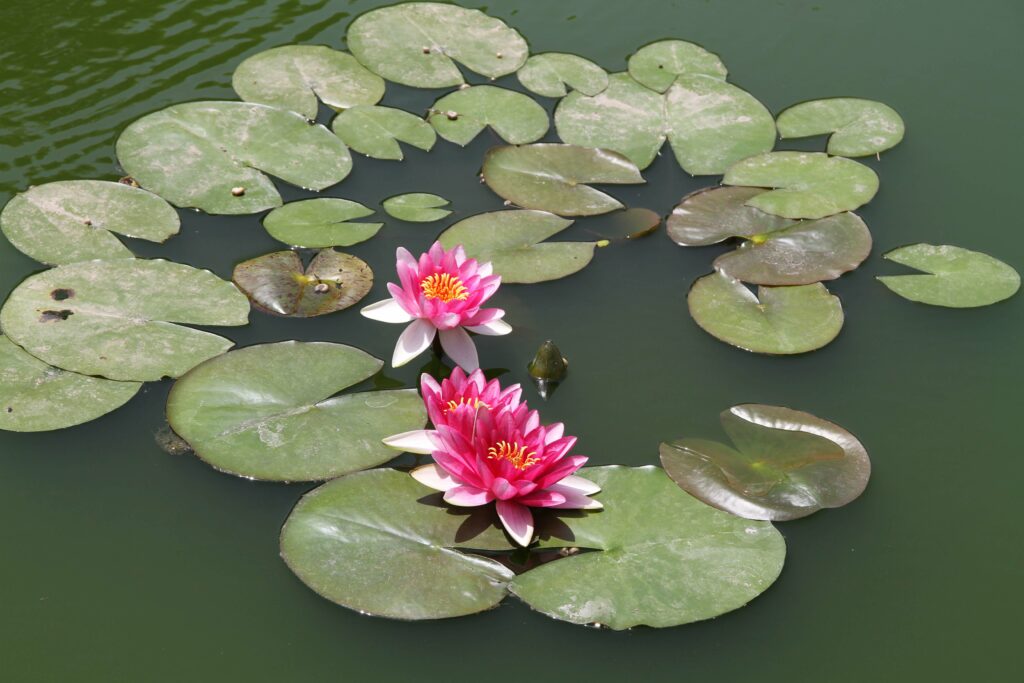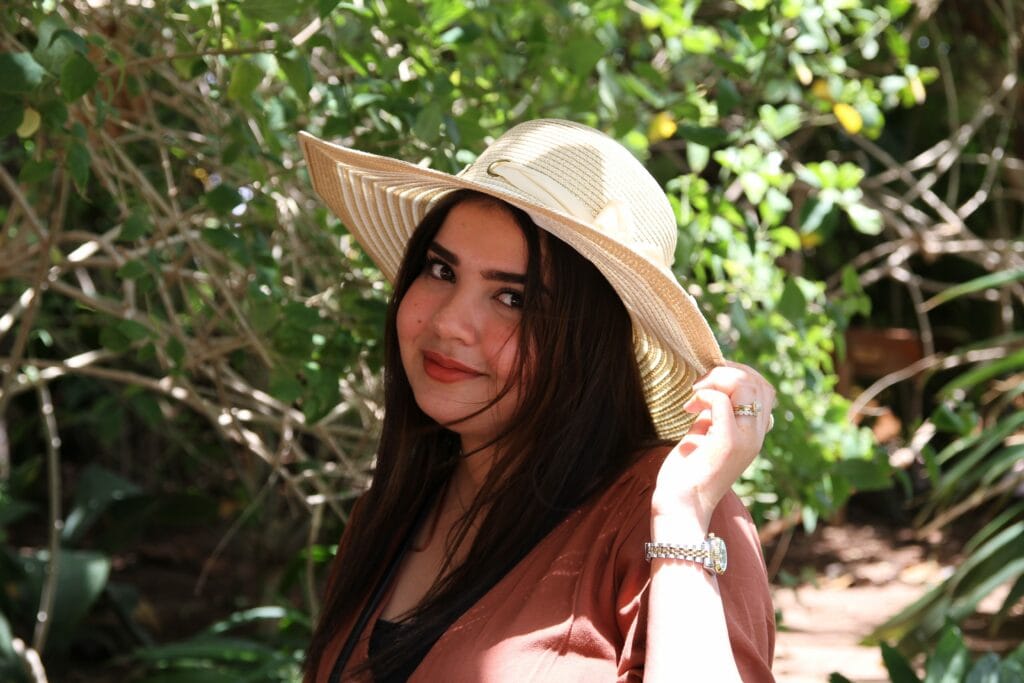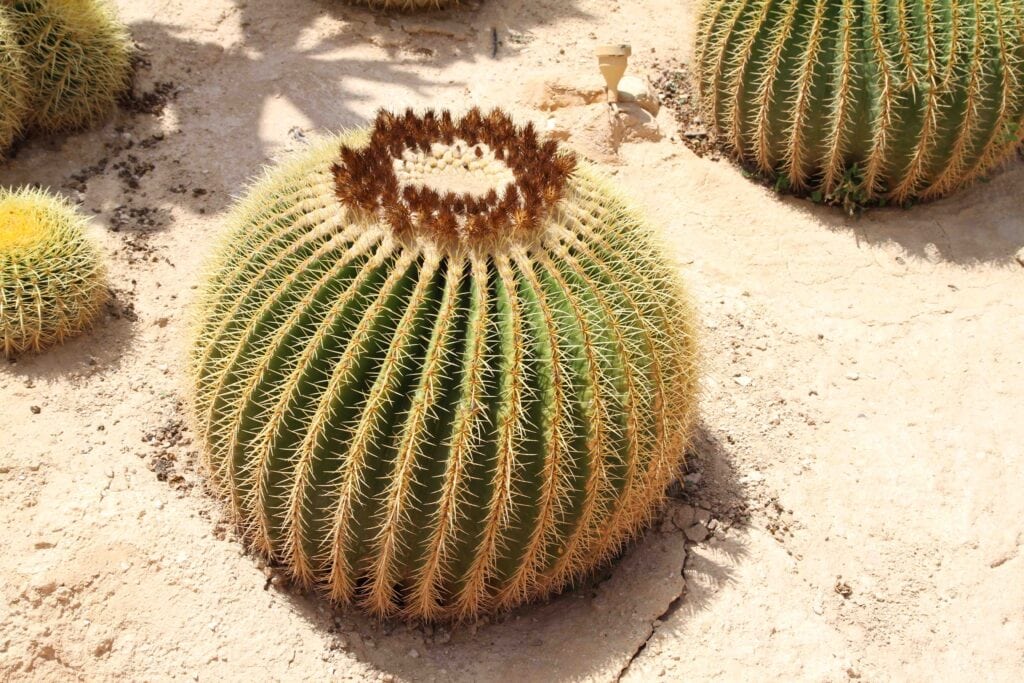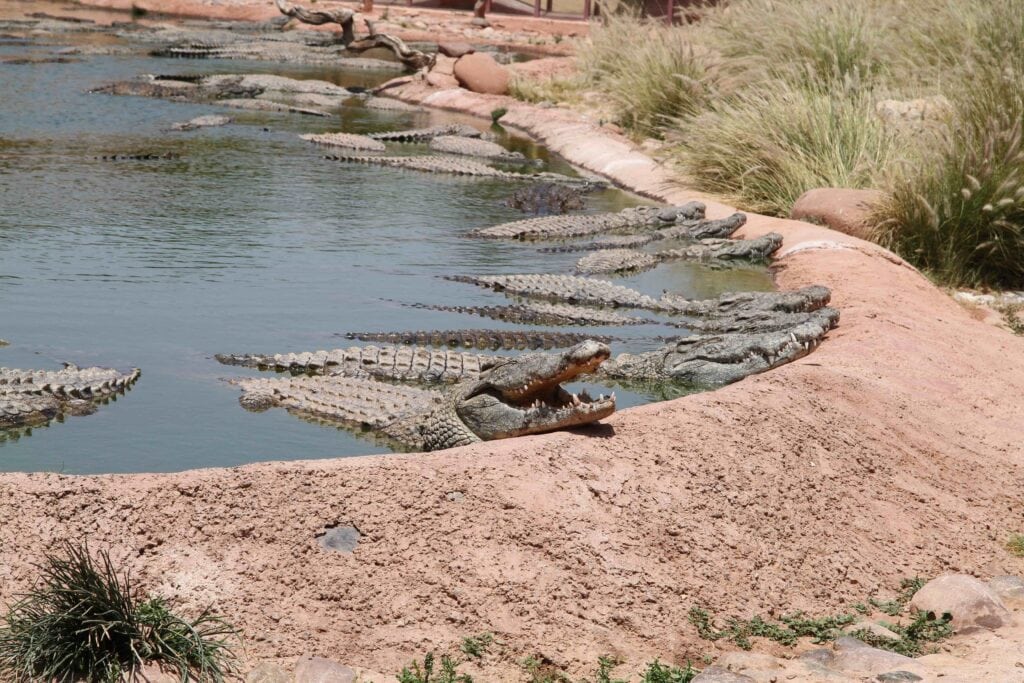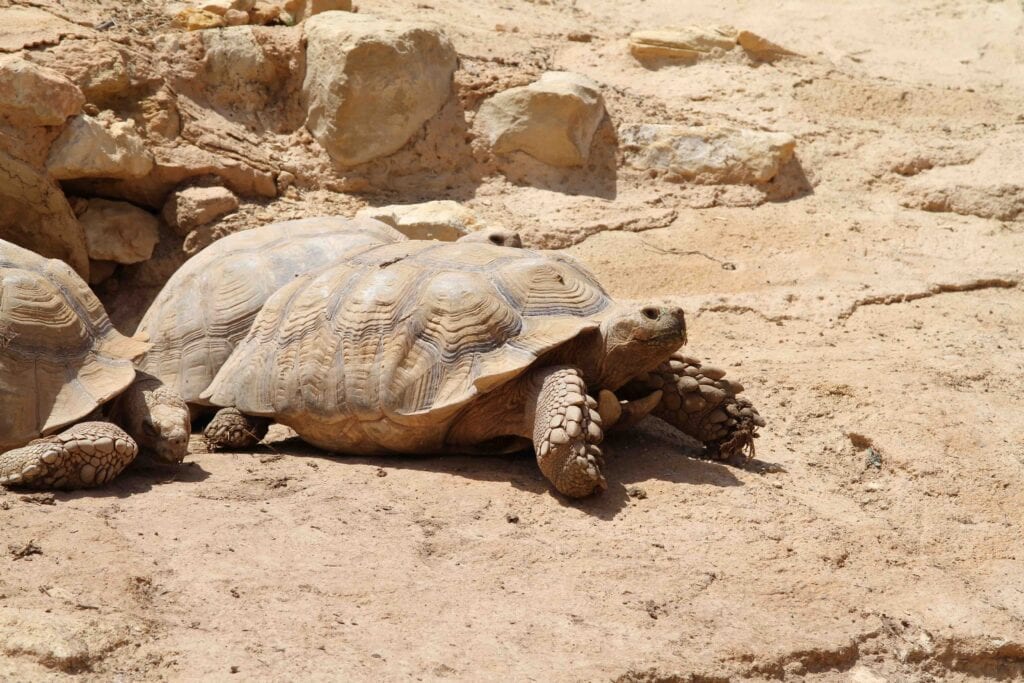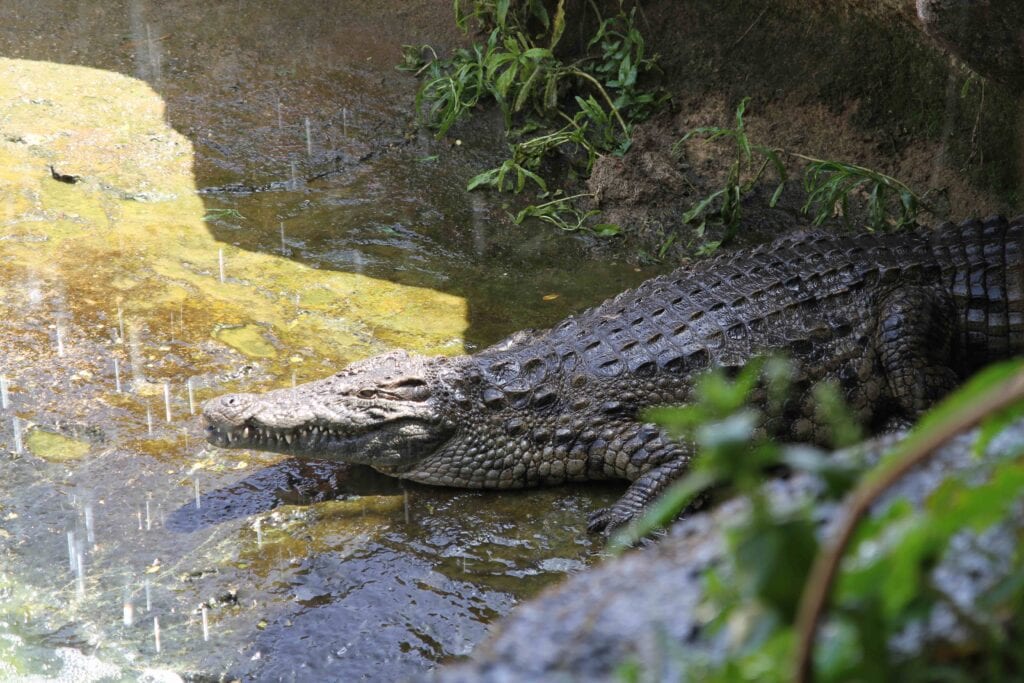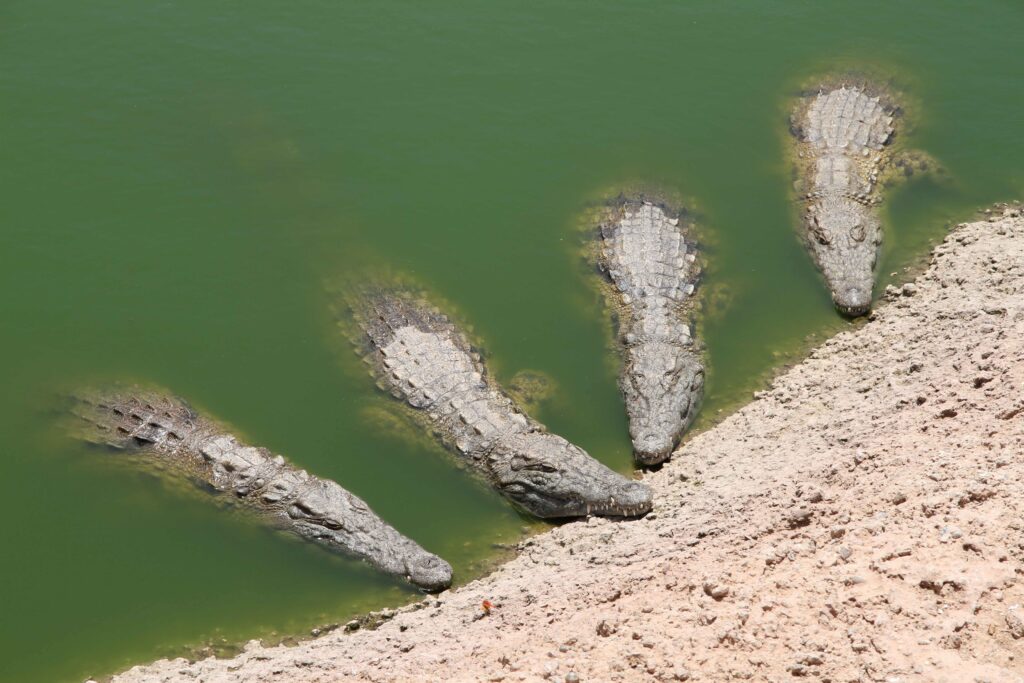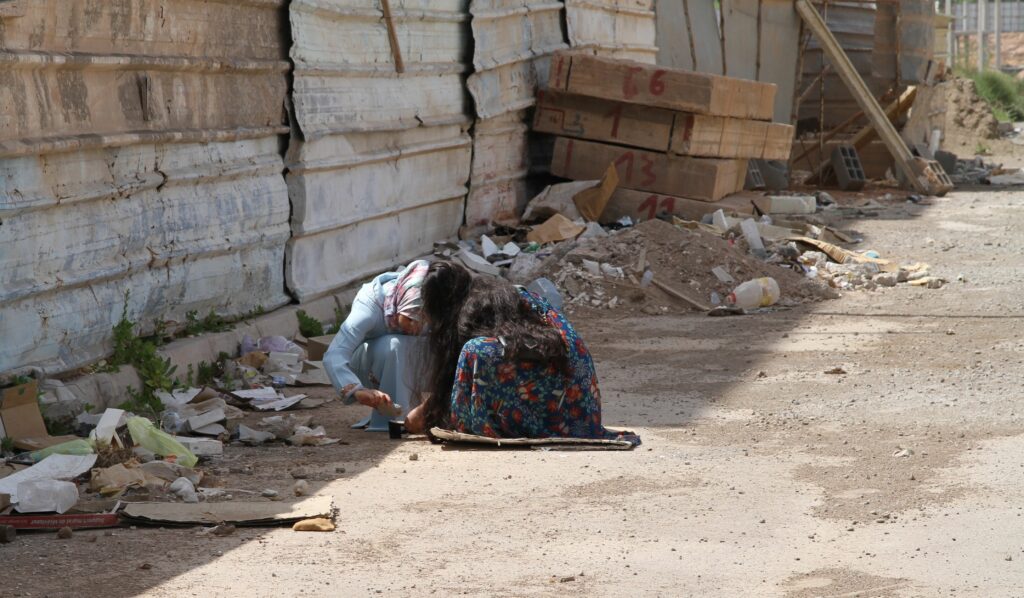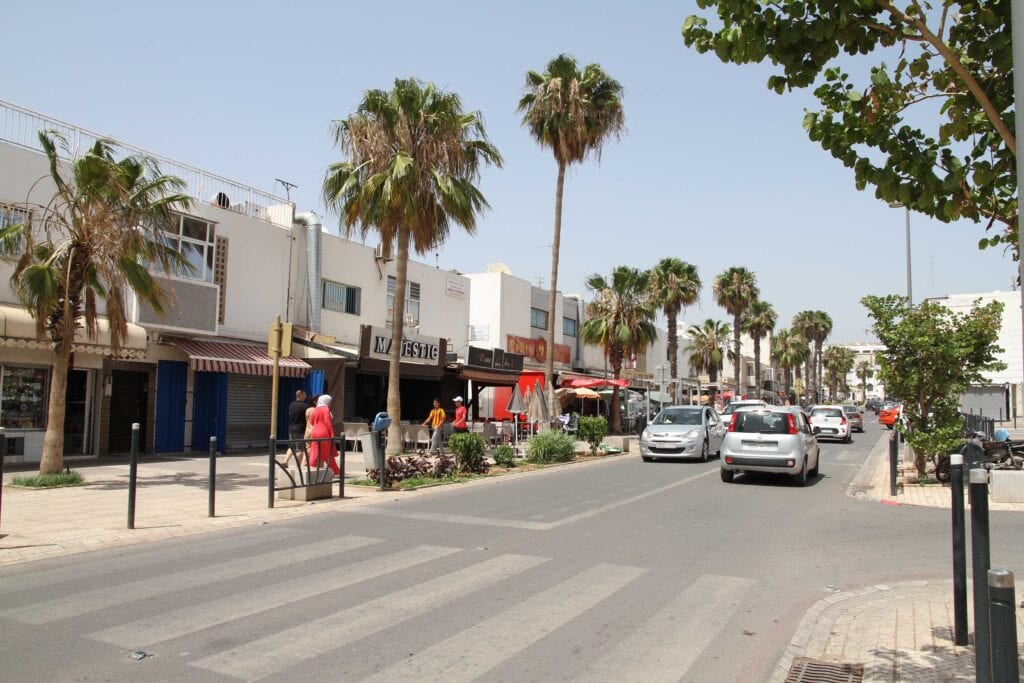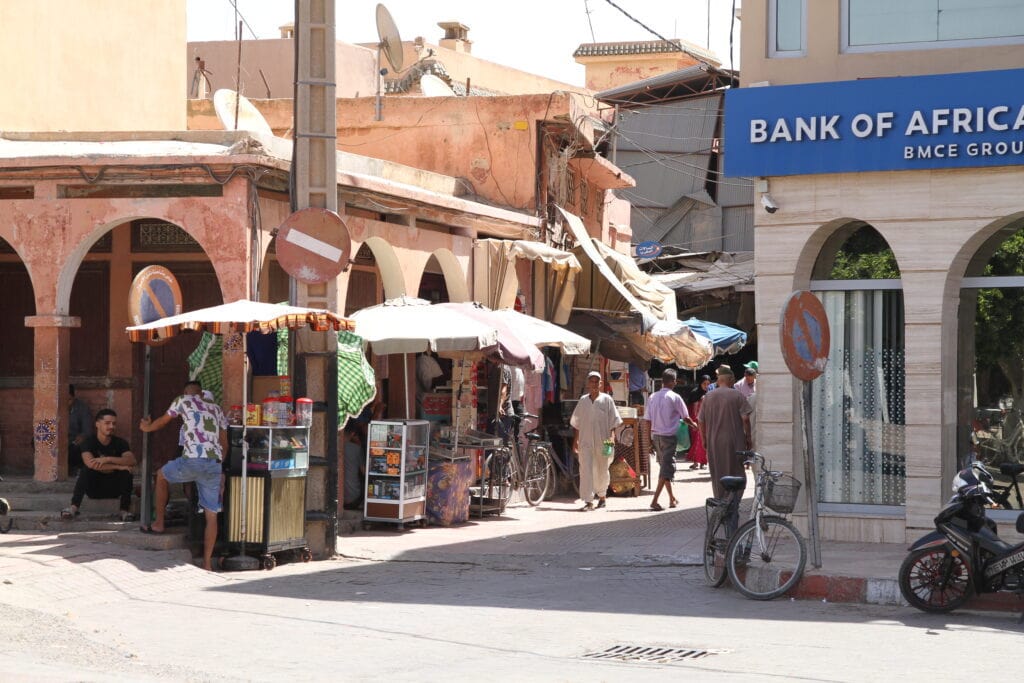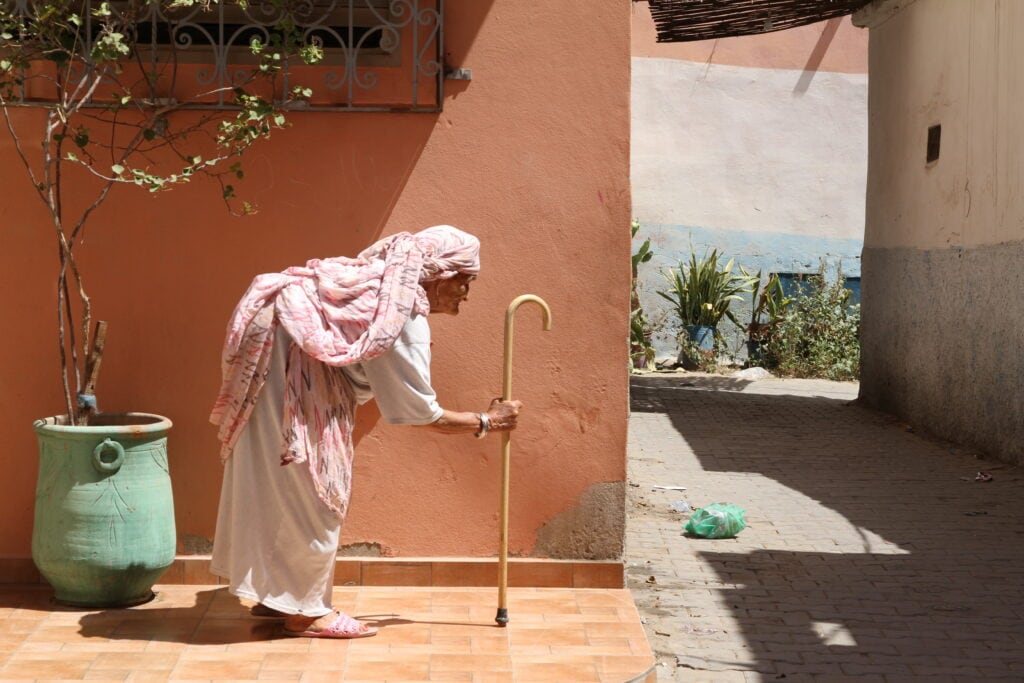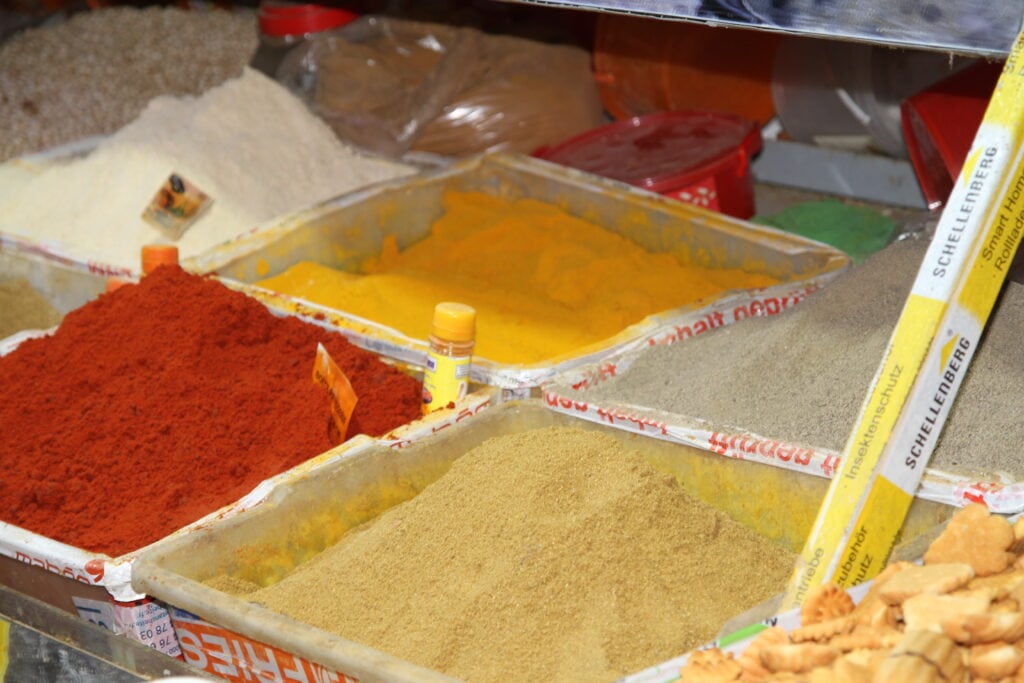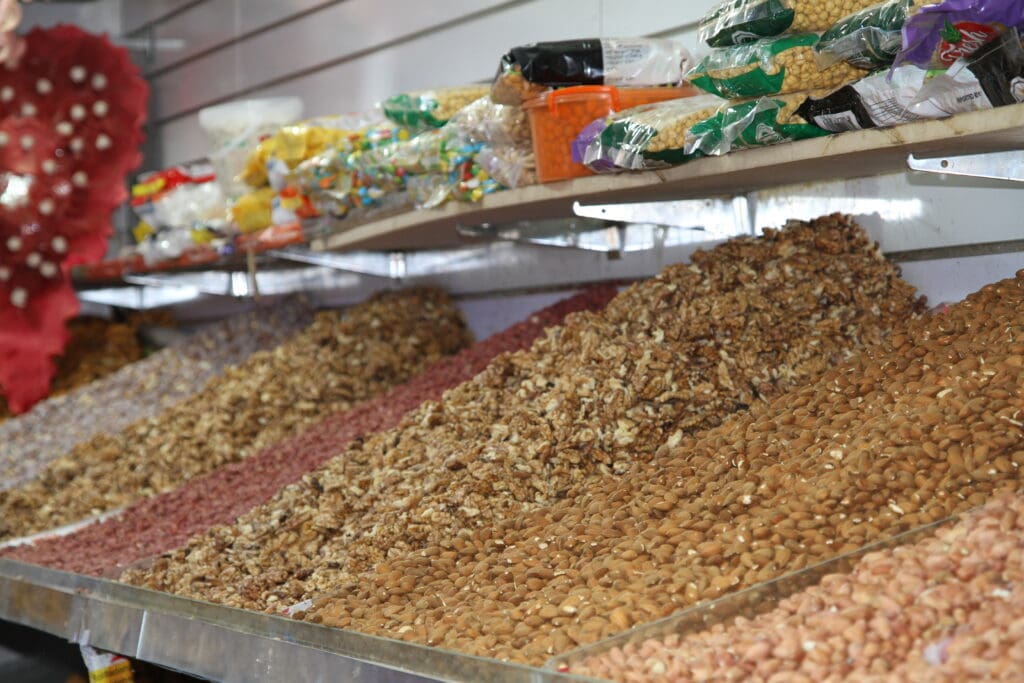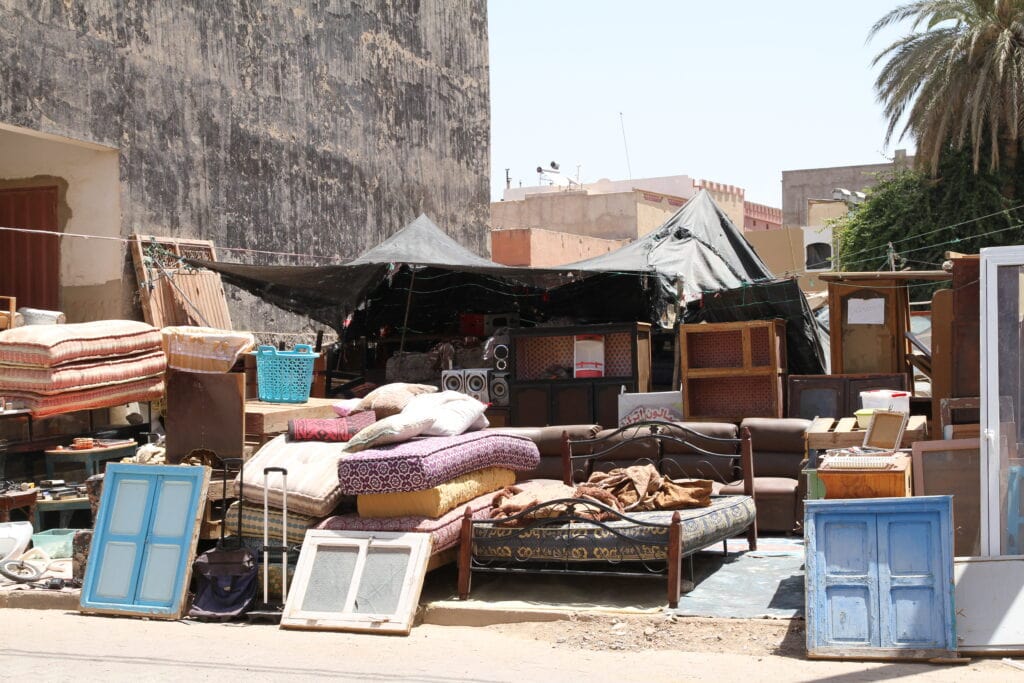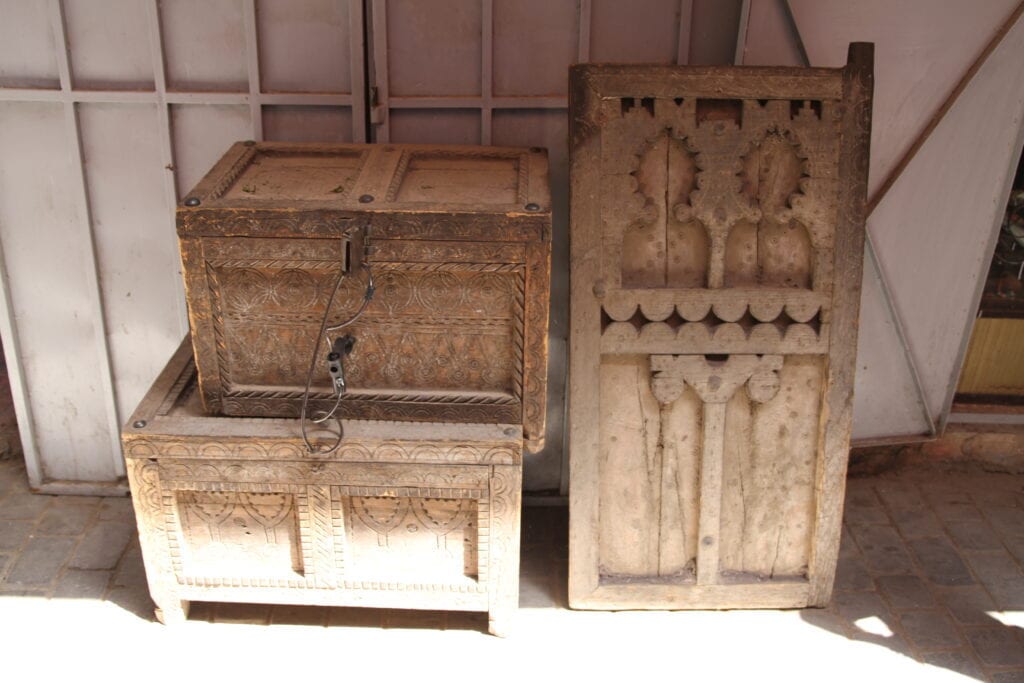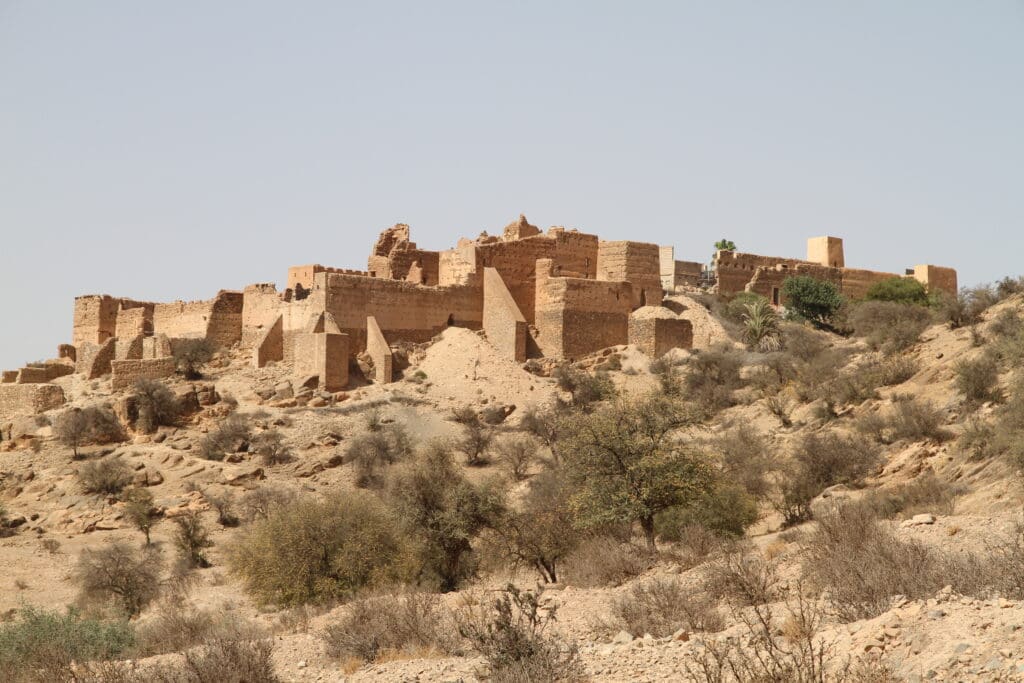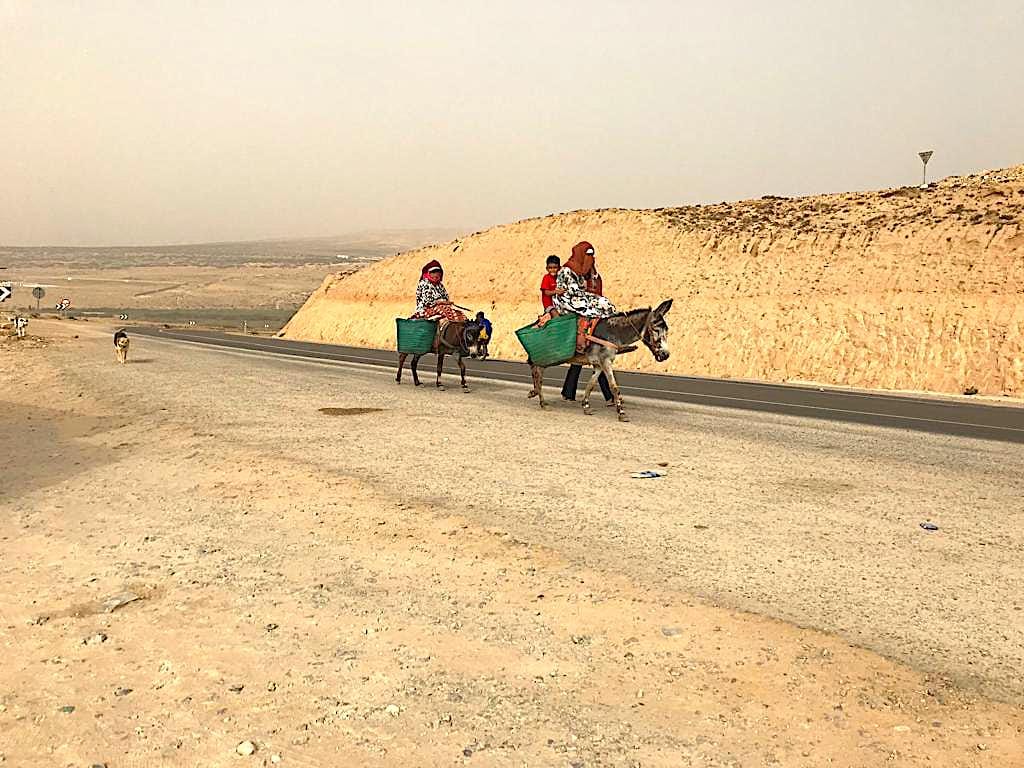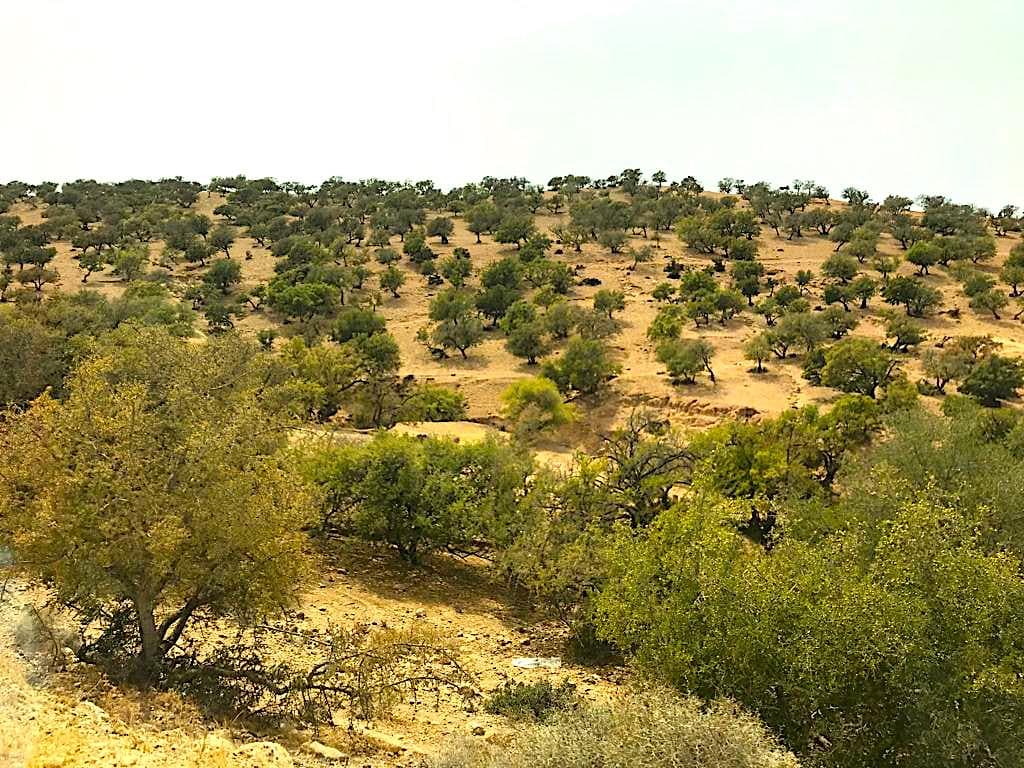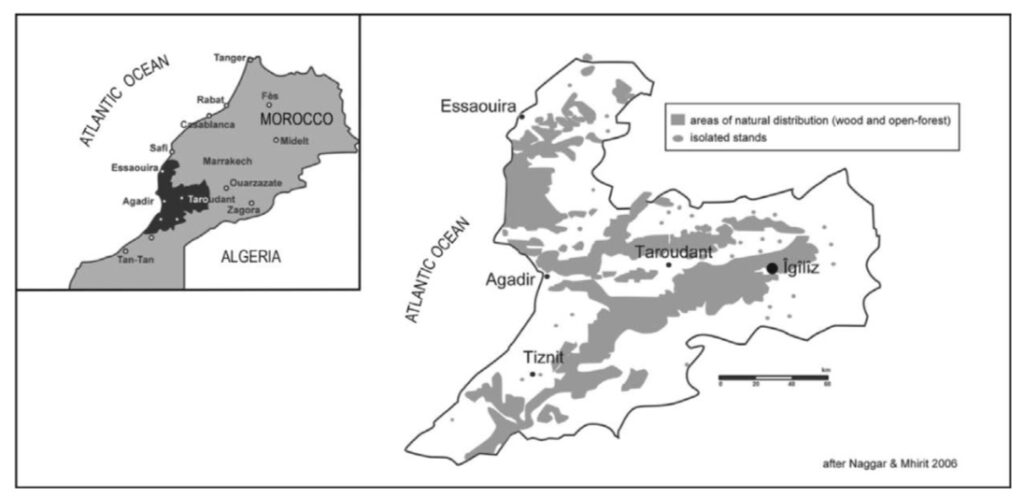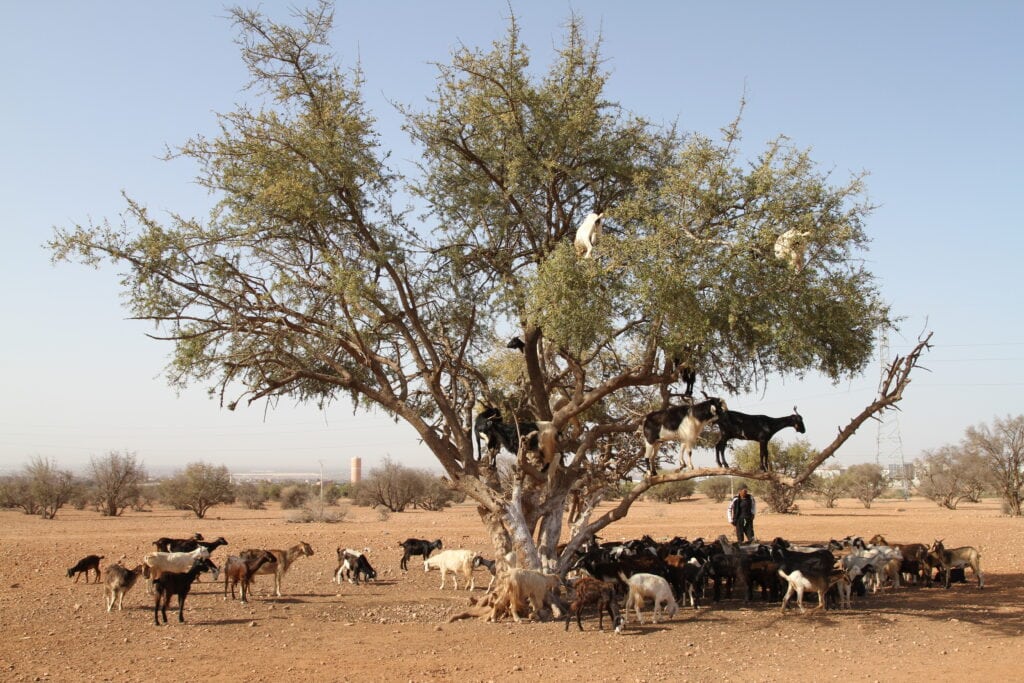Along the Caravan Trade, in Morocco!!
For nearly a thousand years, chariots traversed the sands of the western Sahara; however, everything begun with the introduction of the camel into Tripolitania by the Romans around the first century A.D. and its subsequent adoption by the Arabs and the Berbers. The control of the trans-Saharan trade supported the greatest empires, from Carthage to those of ancient Ghana, Mali, and Songhai, attempting to exert greater influence on trade and establish an economic monopoly. Specifically, it was the introduction of Islam in North Africa and the Saharan regions that determined a stable political environment that allowed for safe passage of caravans.
Thus, the rich gold deposits in sub-Saharan West Africa and the introduction of the camel are the determinants of the caravan trade development. Further, it is thought that the trade in gold from sub-Saharan West Africa began earlier the establishment of Islamic control; indeed, the minting of “globular solidi” at Carthage occurred with metal originated from trans-Saharan areas (probably from Tadmekka in north-eastern Mali). Villages and towns are structured accordingly. Indeed, they comprise a medina (a walled structure divided into quartiers, each one offering a mosque, a hammam, a communal bread oven, a madrasa (school) and a water fountain) and different souks (markets). Architectural features of medinas include terraces and riads (i.e., indoor courtyards) presenting fountains and zellige tilework. Modern architecture has influences from French and European movements like Art Deco and new Modernism nicely blending with the Moresque; further, another relevant characteristic is the use of colours in unifying the cityscapes. In this context, vernacular architecture plays a fundamental role in achieving environmental, cultural, and economic sustainability although the great concerns for earthquake resistance has been enforced in the use of concrete.
Essaouira
In ancient times, even earlier than the caravan trade, what is now known as the port of Mogador (i.e., safe anchorage in Berber) was firstly occupied by Phoenicians and then Carthaginians; it is sheltered by offshore islets and a rocky headland although its channel is narrow and dangerous. Indeed, it is extremely windy (good for windsurfers but not for sunbathing), especially between April and November. The city as we know it today was founded by Sultan Sīdī Muḥammad ibn ʿAbd Allāh in 1765 as a rival port to Agadir; since then, its commerce flourished thanks to a colony of Moroccan Jews. As many may not be aware of, it has been known for a long time as the Port of Timbuktu.
The old city (medina), a UNESCO World Heritage, is famous for its numerous riads, artists, and prosperous artisan industries; further, it is a nice example of multicultural centre because of the coexistence of diverse ethnic (i.e., Amazighs, Arabs, Africans, and Europeans) and religious groups (i.e., Muslim, Christian and Jewish). The Medina is a splendid example of fortified town of the mid-eighteenth century, surrounded by a wall influenced by the Vauban model (i.e., European military architecture) but it is in perfect harmony with the precepts of Arabo-Muslim architecture and town-planning.
Souks reflect the local traditions, culture, and agriculture of Morocco: tagines (handmade pots used for cooking), spices, clothing, leather goods, balghas (shoes pointed at the toes made from leather), home decor, tea sets, lanterns, shoes, jewelry, cosmetic products, rugs, etc.
Agadir
Agadir was probably founded by the Phoenicians around 1104 BC and later known as the ancient Roman Portus Risadir; however, the first mention of its name was recorded in 1510 during the Portoguese occupation from 1505 to 1541, when it fell to the Saʿdī sultanate during the peak of the caravan trade.
In 1572, the Casbah was built and the city was named Agadir N’Ighir (i.e., fortified granary of the hill); the city became a harbour of some importance during the Berber reign of Tazerwalt exchanging sugar, wax, copper, hides and skins for weapons and textiles. However, after the earthquake of 1731 Agadir’s harbour was closed and replaced by Essaouira. The city lost its prestige until 1881 when Sultan Moulay Hassan reopened its harbour to support the expeditions in the South to promote his authority over the Souss tribes; notwithstanding, the city was already reduced to nothing more than a village.
In this context, on 1 July 1911 German companies supported by the military claimed privileged interests on the Bay of Agadir with the SMS Panther and the cruiser Berlin triggering the Agadir Crisis between France and Germany. As a result, the city was occupied by French troops in 1913 and new infrastructure (port, roads, etc.) was built to protect the French interests (exploitation of mineral resources and fishing). Again in 1960 the city was destroyed by the forces of nature and rebuilt 2-4 km south of the old town becoming the city we know today.
A few kilometers from the city center, the reconstruction of the Medina of Agadir (or Medina of Coco Polizzi) reproduces the ancestral architecture of Souss Massa.
Everywhere in Agadir various residential and commercial property projects are still in development at the time of writing (2022). Further, Agadir features an impressive stretch of white-golden sand backed with palm trees and a promenade in front of the Atlantic with a marina, golf courses, restaurants, luxury hotels, and shopping; with 300 days of sunshine a year, it is a great spot for families and those seeking an easy, relaxing getaway. Another great spot is the Ensemble Artisanal Agadir consisting of a multitude of merchant stalls and small shops offering items including traditional Moroccan crafts such as pottery, baskets, ironwork, and many others.
Among other attractions, Agadir Crocopark has 325 Nile crocodiles (Crocodylus niloticus) as well as giant tortoises (Centrochelys sulcata), green iguanas, giant pythons, anacondas, and marmosets with gardens featuring rare trees, cacti, flowers and several lily ponds. Adult crocodiles are up to 23 feet (7 meters) long but you can see also the little ones in the nursery where crocodile eggs and baby crocs swim in incubator tanks. Local exemplars are found, too ;-))))
Morocco has already labeled 30 of its 83 towns “slumless”, including Agadir, although poverty remains an issue especially in pandemic times notwithstanding King Mohammed VI established the Cities Without Slums program in 2004 and completed in 2011, having received EUR 90 million from the European Commission.
Food and Tradition
Moroccan cuisine is an important part of Moroccan culture with paramount importance of the use of spices (commerced since the times of the caravan trade), bread to soak up sauce, and great appreciation for seasonal meals. Ethnic cuisine is a shared theme in identity studies, researchers pointed out that “sharing a meal becomes an act of repossession to maintain a sense of wholeness while imposing order in a disempowering world through the structuring force of rituals”. Most Moroccans prefer to shop at the souk where sourced products are grown without pesticides, bred to withstand shipping, and taste more flavourful (although uglier). Moroccans often live in multi-generational homes where mothers, sisters, or maids cook meals and bond together. Further, Moroccan delicious cuisine is available to most if not all moroccans, regardless of their wealth, social class, or religious prescriptions.
Taroudant and Tiout during the Caravan Trade
Taroudant is a walled city inhabited by a flourishing Jewish community since the 11th century at the times of the caravan trade that went from Marrakesh through Akka to Timbuktu; the city was disputed between Moroccan sultans and Amazigh chieftans.
Jews lived in the mellahs of Freij and Tiout, in an area next to the kasbah high up on the hill; the well known oasis below is called “Below the Jews” and close to the oasis is the tomb of Shalom Benzaquin, a Jewish saint. However, with the end of the caravan trade Taroudant lost its commercial prestige and Jewish were forced to move to Marrakesh and Israel in the early 1960s.
Tiout was once regarded as a center of knowledge thanks to the ancient scientific school in Taroudant (i.e., the Jestimiyya); still preserves its old mosque, the Saadian Mosque. Few know that Al-Mukhtar al-Susi indicated in one of his books that “the people of Tiout found a gold coin in the base of the Kasbah”.
The Argan Tree
Argania spinosa is a woody plant, 80-million-year-old, with spiny branches that can live for 100 to 200 years with deep root systems able to remain dormant for up to ten years without water; further, it supports the ecology of over 1,200 plant and animal species. For centuries, earlier than the caravan trade, Amazigh peoples have used the tree for feeding sheep and goats, fires and charcoal, and for producing oil from its nuts. Specifically, the oil has been an Amazigh women’s activity because of its use in cooking, cosmetics, and medicine but most prominently because of the matriarchal tradition characterising the Berbers. However, such type of tradition has been lost after the establishment of Islam until the late post-colonial times (i.e., 1990s) when the creation of women’s cooperatives determined a source of income for women and enlarged considerably their independence, rights, and freedom. For this reason, the region was declared a United Nations Educational, Scientific and Cultural Organization (UNESCO) reserve in 1998; further, the local population was granted common and individual usufruct and access rights to defined plots in the forest in amendment to the previous legislation enacted 1917 considering it domain of the state.
On the other hand, marketing and a variegated exploitation of the argan oil (i.e., intermediaries, bulk buyers, and local adventurers) substantially impacted the commerce, supply chain, and benefits these women obtain simply by increasing competition in the local market and by speculating in the gaps between demand and offer at the damage of a largely education-deprived minority. To this extent, the government with the international society introduced a normative framework providing legal protection for the resource (i.e., UNESCO Biosphere Reserve), legal concept for the premium product, intellectual property rights on processes, and legal labels/certifications for fair traded and organic product with the fundamental objective of determining an economy of solidarity and equity. However, it is debated and largely questionable that neoliberal dispossession may offer greater economic advantaged to the local population without firstly introduce and educate such people to the modern market economy; indeed, an error in this direction may further augment demagogical critiques to what has been achieved until today.
The Outcomes of Multiple Occupations and Colonisations
The lands of modern Morocco witnessed various military occupations and colonisations during the last 3-5 thousands years. Most of the cultural heritage of previous civilisations has been lost. According to Black’s Law Dictionary, “cultural property is movable or immovable property that has cultural significance, whether in the nature of antiquities and monuments of classical age or important modern items of fine arts, decorative arts, and architecture”. Some writers prefer the term cultural heritage, which more broadly includes intangible cultural things such as folklore, crafts, and skills. Cultural property can be a military objective during conflicts because of its symbolic value as in the case of the destruction of synagogues in most Europe and of British historic civilian centers during the Third Reich. However, similar attempts to destroy a culture through the attack to its symbols happened recently as in the case of the al-Qaida attack to the World Trade Center in New York, the Taliban’s demolition of the Buddhas of Bamiyan, and the Khmer annihilation of Buddhists and Muslims in Cambodia. The fact the destruction of cultural property is a relevant issue is related to the political strategy of cultural annihilation of the opposing alternative obtained by destroying the symbols defining the alternative’s cultural heritage.
Populism and Religion in Post-WWII (ex-)Colonies
The geopolitical situation inherited from postwar international agreements has essentially produced a broad periphery of the victorious superpowers in which the social dynamics resulting from exasperation, economic hardship, ignorance, values, ideologies, and radical movements have exploited religion as a means of creating an identity, political and cultural. Known examples are radical Islamic and Hindu movements linked to politics and terrorism, fundamentalist Christianity in Europe and the United States, the role played by the Jewish state in Arab-American relations, and African animist movements opposing the values promoted by Christian missionaries and Muslims. Such developments are different from systematic communist ideology, but still relevant because this religious conceptualization defines cultural identity as pre-existing to any other system of values; therefore, this abstraction overlaps and supports nationalistic interpretations. Indeed, according to some researchers such as Cammet, Diwan, Richards, and Waterbury, Islam did not identify with the revolution or a specific political ideology, but rather benefited from the institutional vacuum and social tensions left after the end of the dictatorships (and not resolved by successive political systems). As a result, Islam has remained the ideology of government rather than dissent as in the case of Libyan populist socialism, Bangladesh’s conservative authoritarianism, Iranian anti-Americanism, or the pro-American stance in Pakistan and Saudi Arabia. Subsequently, fundamentalism became transversely linked to students and the middle class forgotten by governments and politics; indeed, the failure of modernism to satisfy their needs and aspirations is reflected in the corrupt and bureaucratic institutions of their countries. Therefore, on the one hand, this periphery is characterized by the need and the search for a cultural and political identity considered a reaction to the social and economic conditions determined by the new world order. In other words, the uniformity in production and consumption promoted by the policies of globalization determines an internal need for means and values that support the singularity of the individual within a community of which he feels a part. As a result, many of the positive aspects of globalization have been thwarted by anti-globalism movements that have promoted religious nationalism to defend an already artificial cultural identity. Nonetheless, a multiplicity of manifestations of populism ranging from religious, populist and patriotic parties to characterizations of value and lifestyle of political leaders and parties are qualifying elements of these movements.
If you are more interested in the caravan trade, check alhiwaar site.
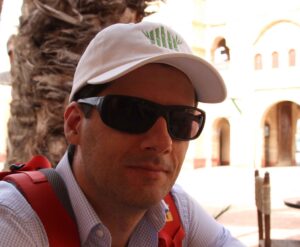
References
Monteil, V., Essai sur le chameau au Sahara occidental (1952);
Sir Mortimer, Wheeler, Rome beyond tile Imperial frontiers (Penguin Edition, London, 1954), 121
Brogan, O., ‘The Camel in Roman Tripolitania’, Papers of the British School at Rome, XX (1954)
Adu Boahen, The Journal of African History , Volume 3 , Issue 2 , July 1962 , pp. 349 – 359
Ehlert, C., ’Prosecuting the Destruction of Cultural Property in International Criminal Law’ (2014, 1st edn) Martinus Nijhoff
Encyclopedia Britannica
David W Phillipson, The Antiquaries Journal, 97, 2017, pp 145–69
Dike, M. Ruth. “Exploring Moroccan Identities in the Diaspora,” Digest: A Journal of Foodways & Culture 3:1 (2014)
Daud Shad, Suns Set and Rising: An Exploration of Modern Moroccan Architecture (2018)
Daniel F. Robinson, The Moroccan Argan Trade Producer Networks and Human Bio-Geographies (2020)
Bertram Turner, Neoliberal Politics of Resource Extraction: Moroccan Argan Oil (2014)
